In 1630, prior to European colonization, about half the land area of what is now the United States was forested – a little over 1.02 billion acres, according to an estimate by the Department of Agriculture. Since then, more than 250 million acres of forested lands have been cut and converted to other uses. About two-thirds of this deforestation happened between 1850 and 1900, when forest clearing in the eastern U.S. averaged 13 square miles per day.
According to the USDA, forest now covers an estimated 36.2% of the 48 contiguous states, or about 818 million acres, including 190 million acres on federal lands. (Check out how much land the government owns in every state, and what it’s used for.)
To determine America’s states with the most forest and woodland area, 24/7 Wall St. reviewed data on land use from the the United States Geological Survey. States are ranked by the share of total land area classified as forest and woodland. All states were included except Alaska and Hawaii, for which no updated land use data was available.
The top ten states by percentage of forested land all lie east of the Mississippi River, with New Hampshire, West Virginia, Maine, and Vermont in the lead, each comprising over 70% forest and woodland. Oregon and Washington – some of the biggest lumber-producing states in the nation, rank at No. 20 and No. 21, respectively.
Besides providing habitat for countless species and harboring biodiversity, forests filter air and water, prevent erosion, provide society with both natural resources and a haven for recreation, and serve as buffers against climate change, even as it threatens to alter our forested landscapes.
Drought and wildfires, both symptoms of climate change, pose a significant threat to U.S. forests, especially in the West. In the last few decades, wildfire seasons have grown longer and the frequency and severity of wildfires in the U.S. has increased. (Read about the 30 most destructive wildfires in the U.S. this century.)
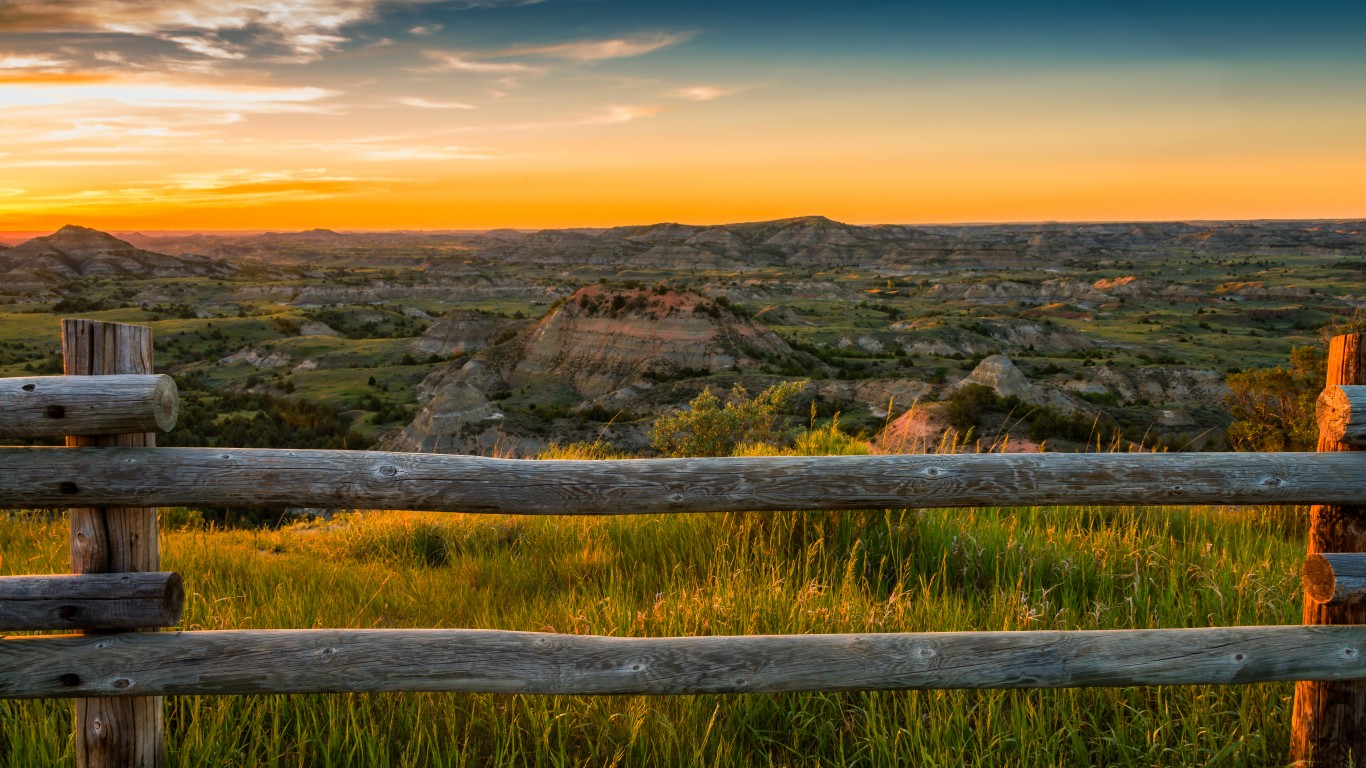
48. North Dakota
> Land covered by forest & woodland: 4.0%
> Area covered by forest & woodland: 1.8 million acres
> Other major land cover types: Agricultural & developed vegetation (64.2%); shrub & herb vegetation (22.1%); open water (4.3%)

47. Nebraska
> Land covered by forest & woodland: 4.1%
> Area covered by forest & woodland: 2.0 million acres
> Other major land cover types: Shrub & herb vegetation (50.5%); agricultural & developed vegetation (40.4%); developed & other human use (3.6%)
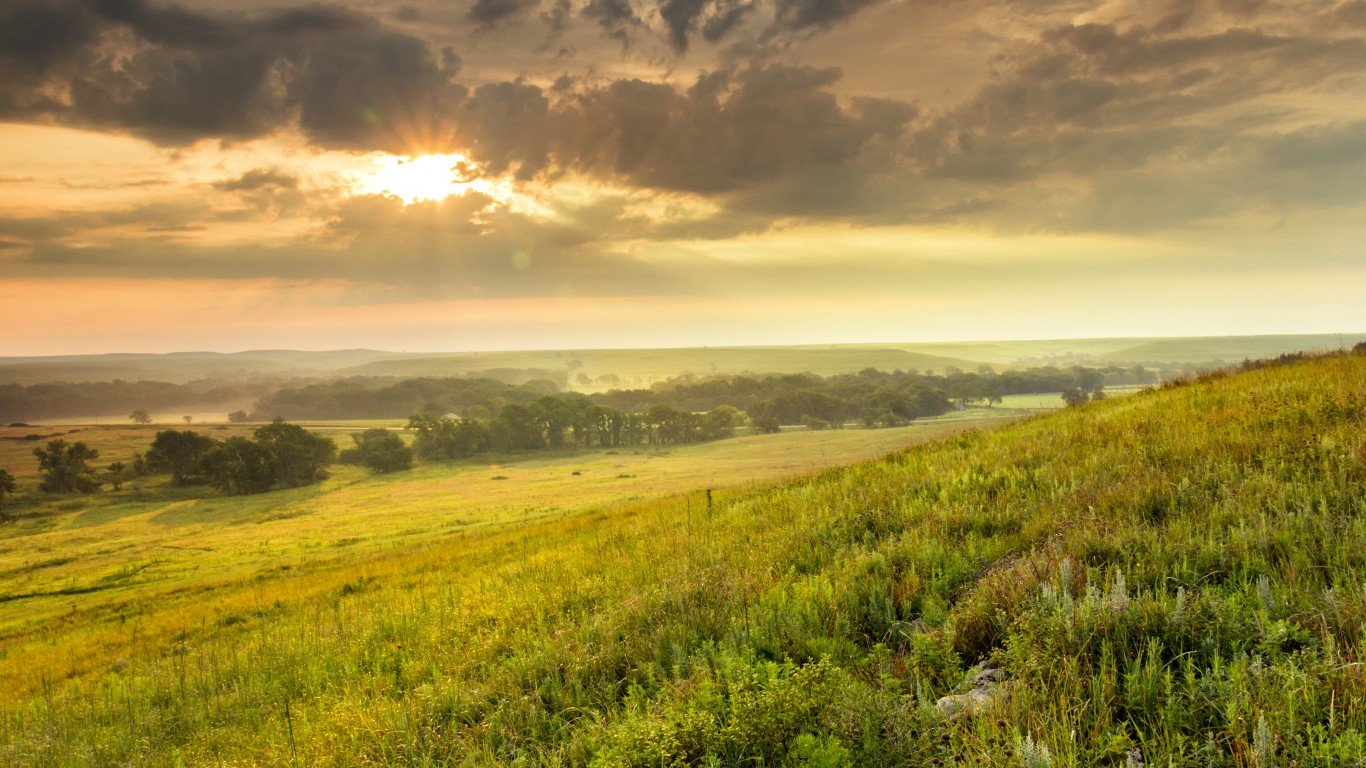
46. Kansas
> Land covered by forest & woodland: 4.3%
> Area covered by forest & woodland: 2.3 million acres
> Other major land cover types: Agricultural & developed vegetation (62.6%); shrub & herb vegetation (26.2%); developed & other human use (5.2%)
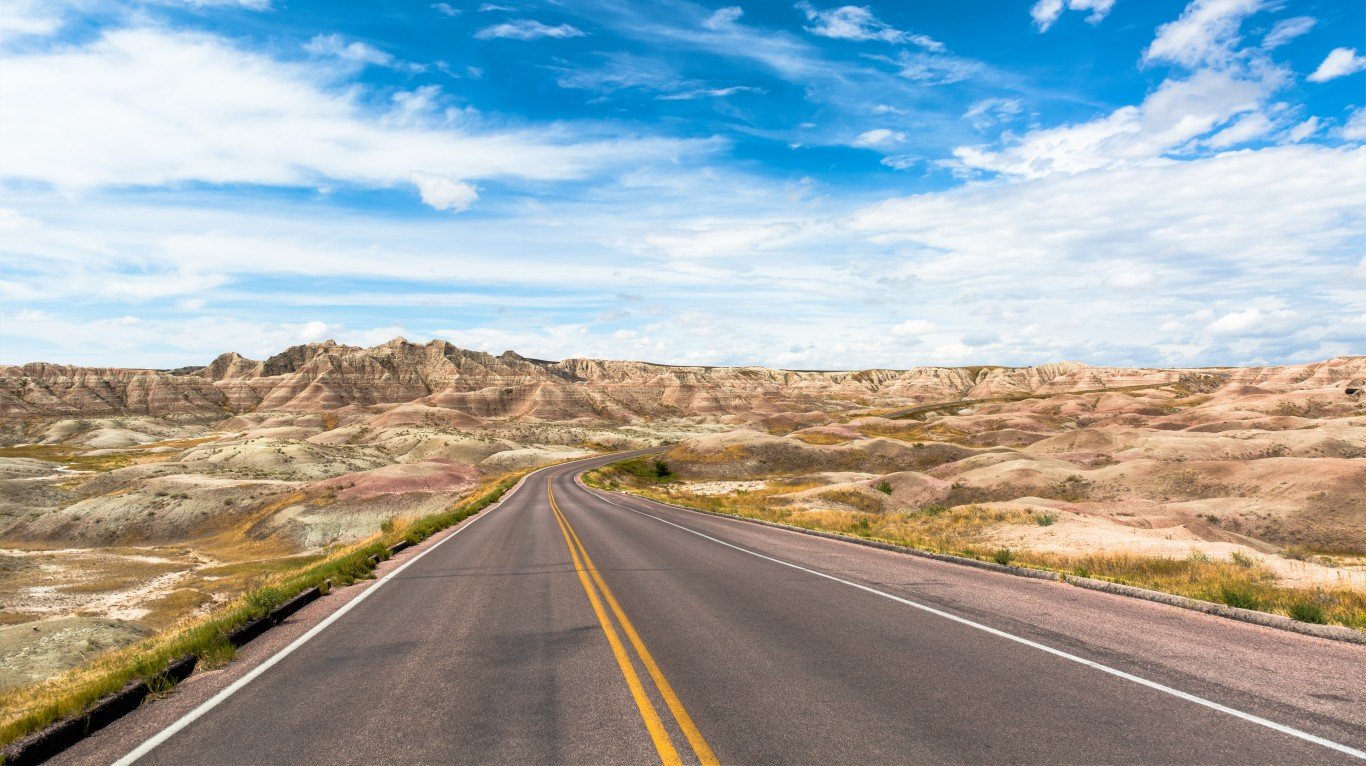
45. South Dakota
> Land covered by forest & woodland: 5.4%
> Area covered by forest & woodland: 2.7 million acres
> Other major land cover types: Shrub & herb vegetation (46.0%); agricultural & developed vegetation (39.9%); open water (2.9%)
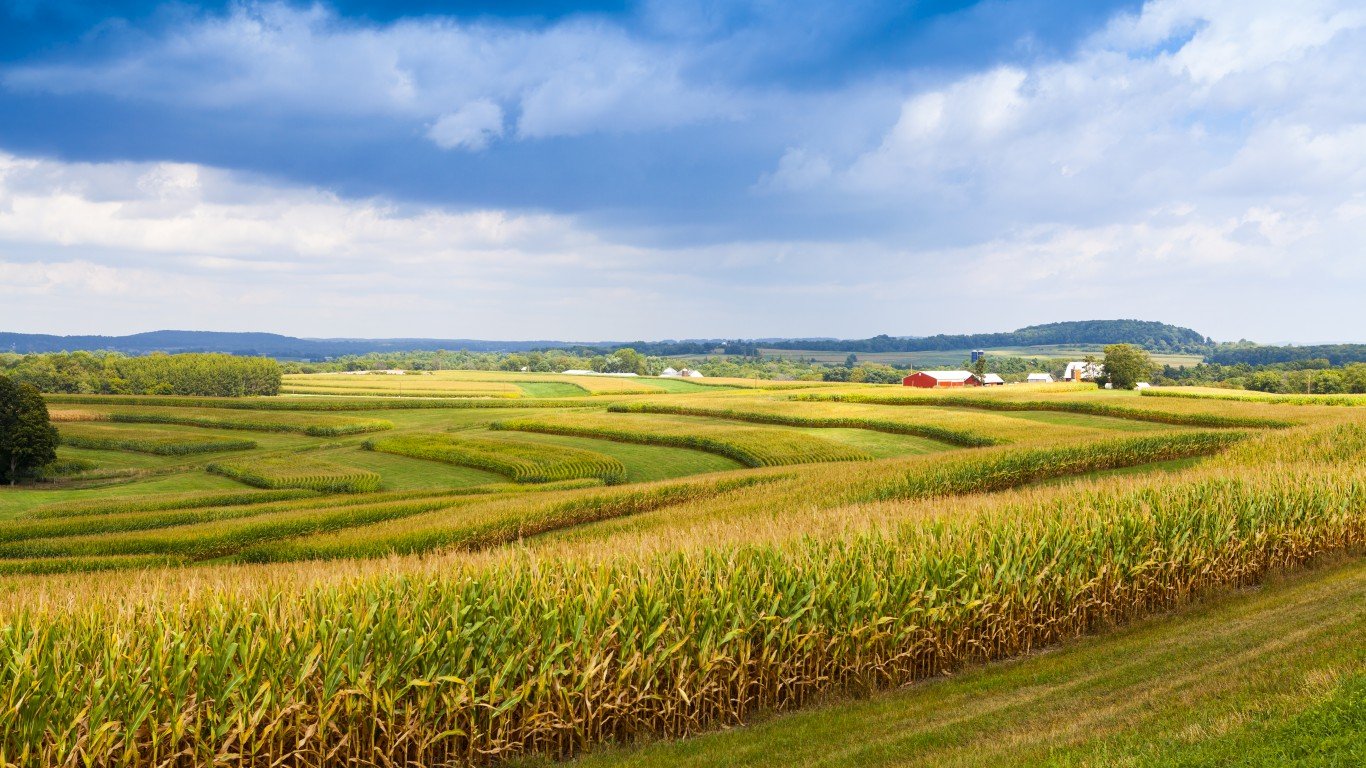
44. Iowa
> Land covered by forest & woodland: 9.6%
> Area covered by forest & woodland: 3.5 million acres
> Other major land cover types: Agricultural & developed vegetation (80.6%); developed & other human use (7.5%); shrub & herb vegetation (1.1%)

43. Nevada
> Land covered by forest & woodland: 14.5%
> Area covered by forest & woodland: 10.3 million acres
> Other major land cover types: Desert & semi-desert (73.3%); shrub & herb vegetation (6.9%); introduced & semi natural vegetation (2.1%)
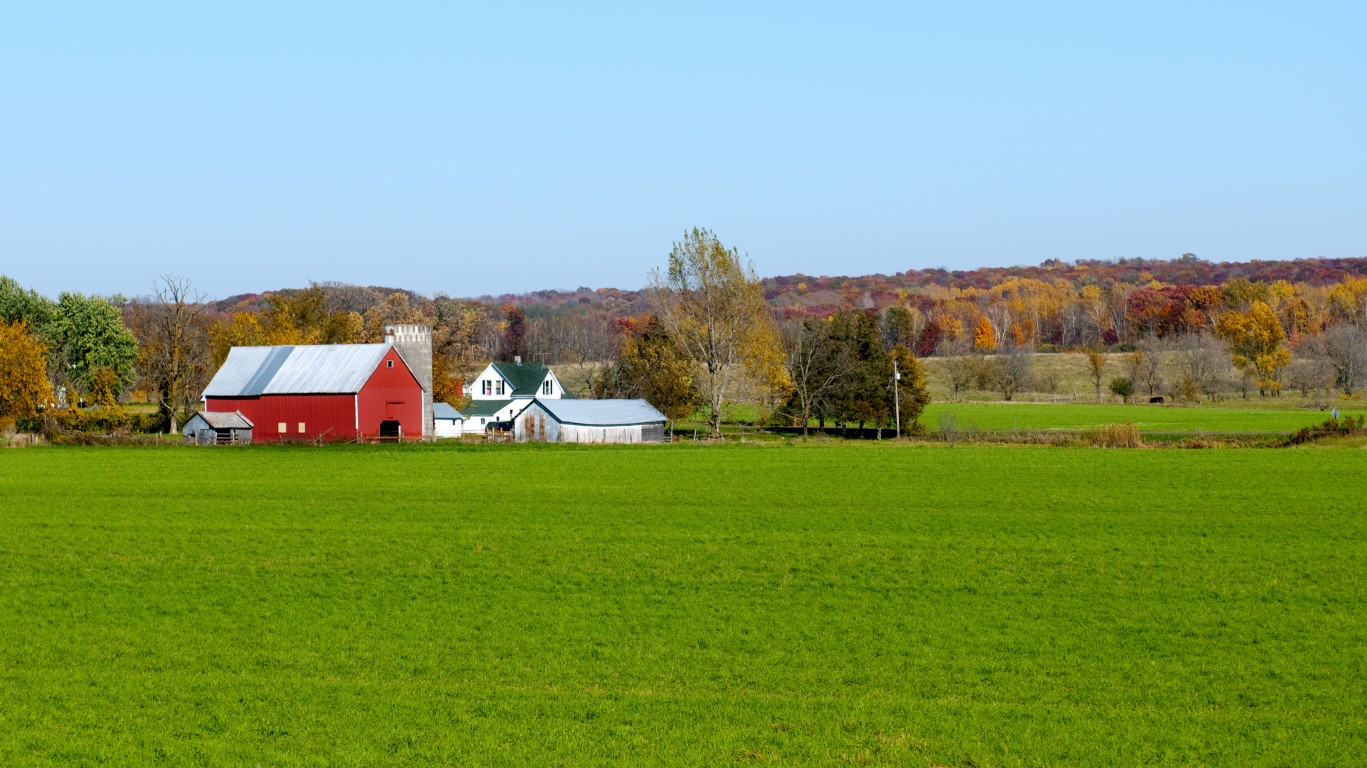
42. Illinois
> Land covered by forest & woodland: 15.4%
> Area covered by forest & woodland: 5.7 million acres
> Other major land cover types: Agricultural & developed vegetation (67.1%); developed & other human use (11.6%); open water (4.6%)
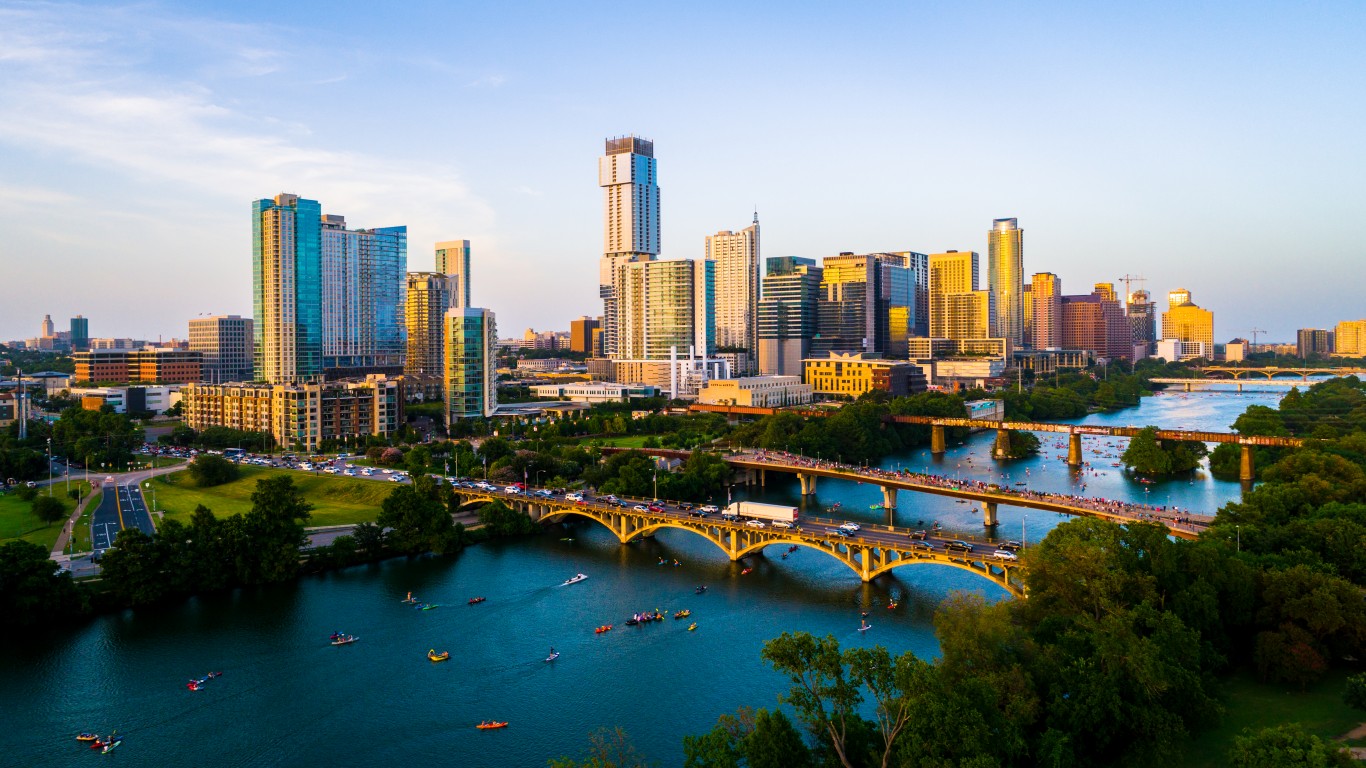
41. Texas
> Land covered by forest & woodland: 16.3%
> Area covered by forest & woodland: 28.0 million acres
> Other major land cover types: Agricultural & developed vegetation (26.7%); shrub & herb vegetation (22.0%); desert & semi-desert (21.5%)
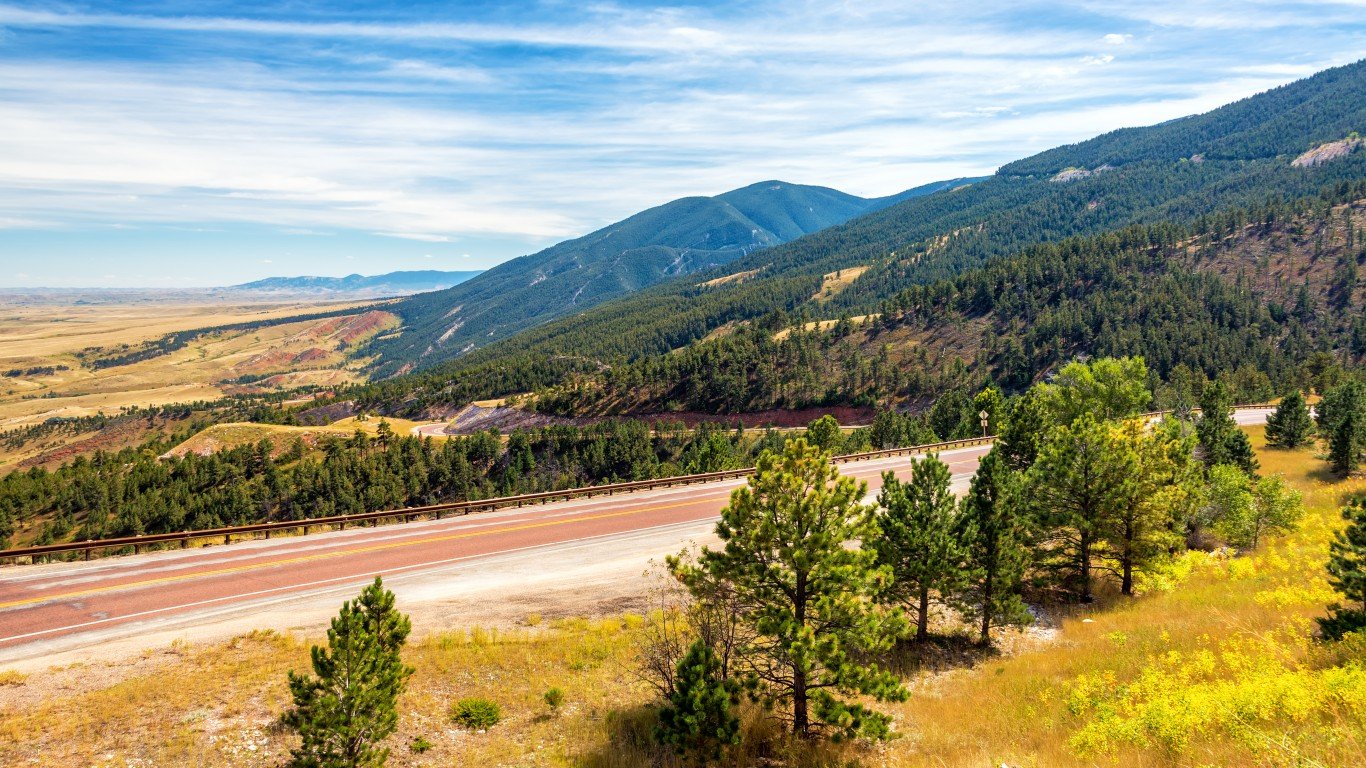
40. Wyoming
> Land covered by forest & woodland: 16.8%
> Area covered by forest & woodland: 10.5 million acres
> Other major land cover types: Desert & semi-desert (56.3%); shrub & herb vegetation (16.6%); agricultural & developed vegetation (3.3%)
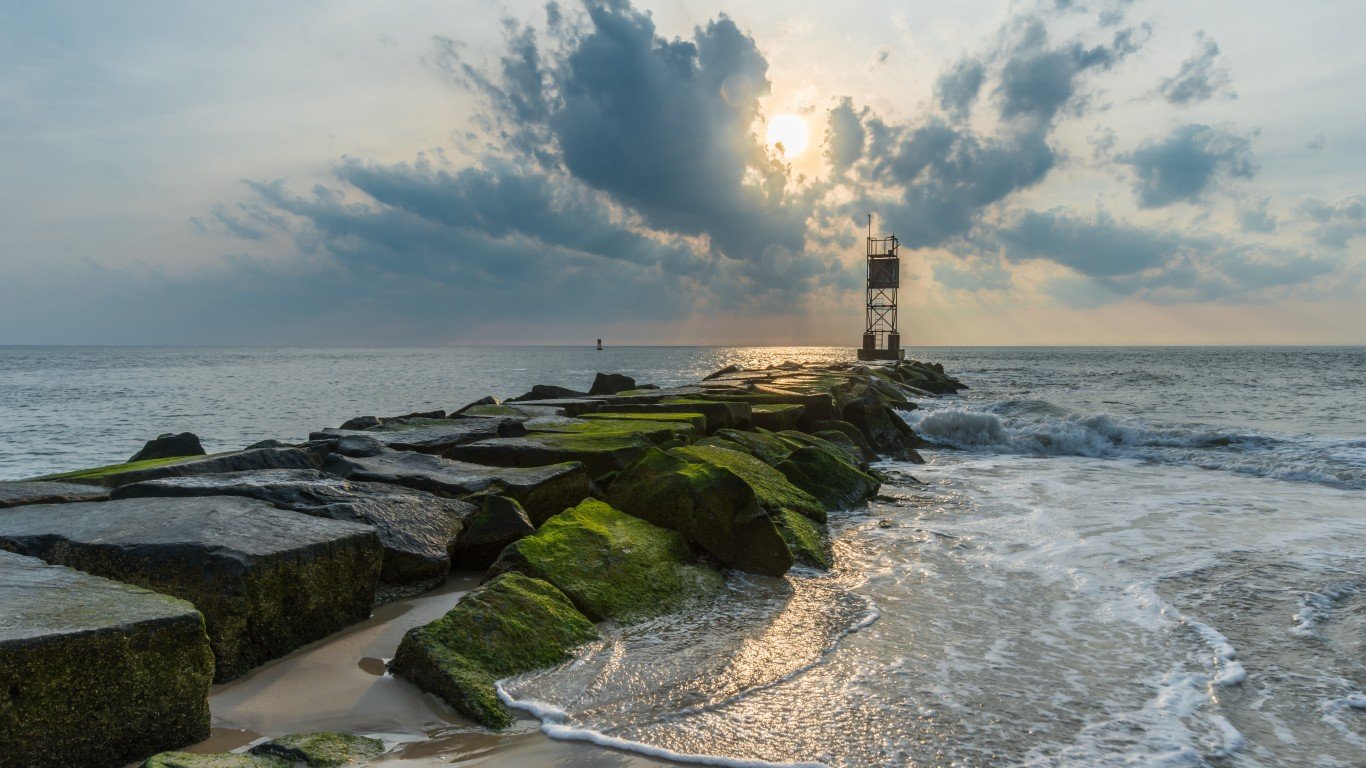
39. Delaware
> Land covered by forest & woodland: 22.7%
> Area covered by forest & woodland: 362,222 acres
> Other major land cover types: Agricultural & developed vegetation (33.1%); open water (21.4%); developed & other human use (15.2%)
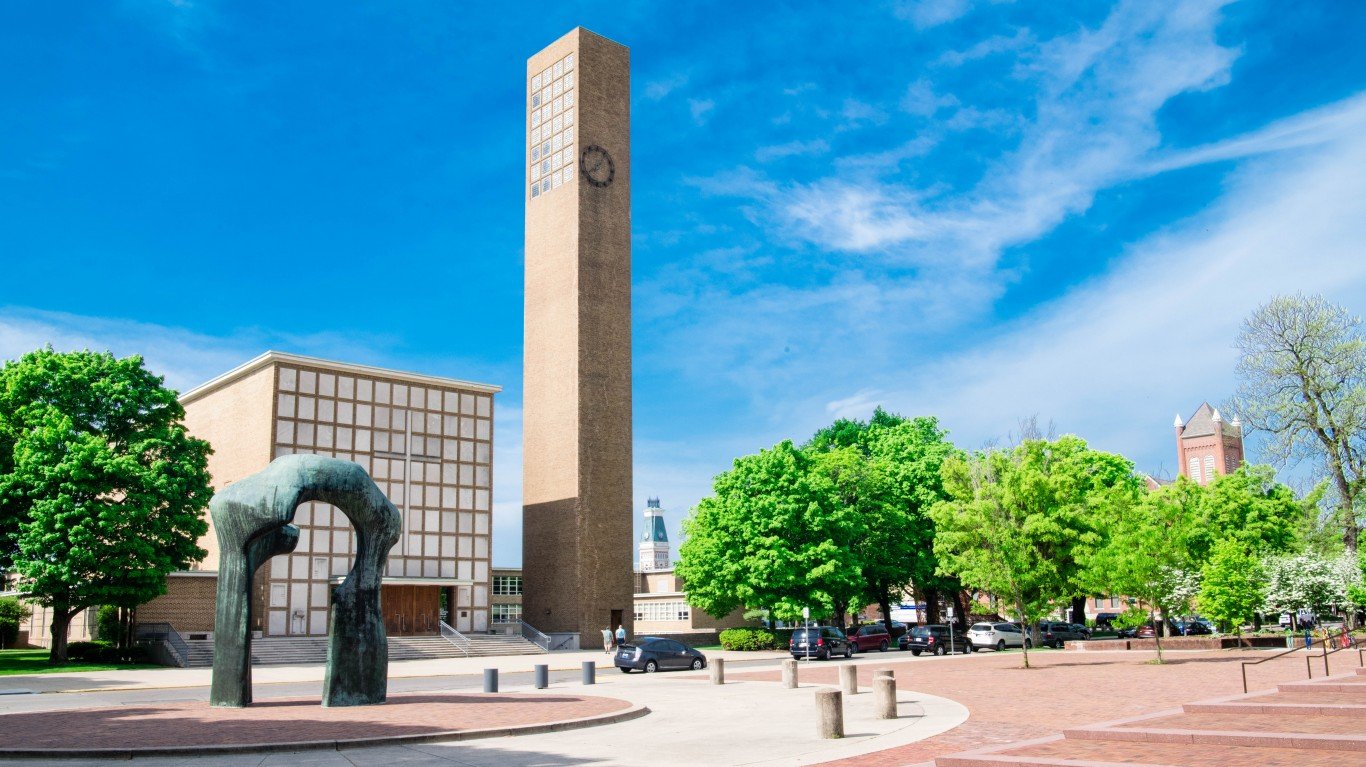
38. Indiana
> Land covered by forest & woodland: 23.9%
> Area covered by forest & woodland: 5.6 million acres
> Other major land cover types: Agricultural & developed vegetation (62.3%); developed & other human use (10.7%); open water (1.9%)
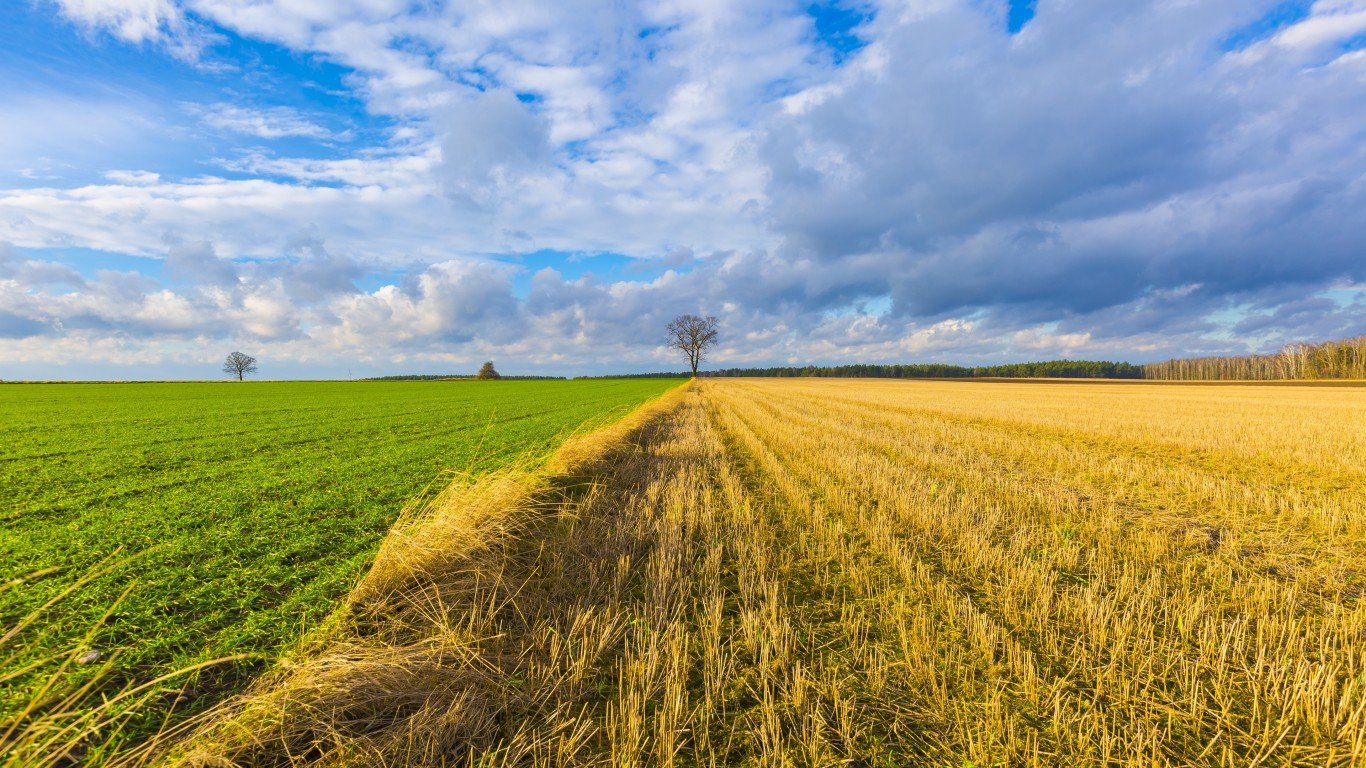
37. Oklahoma
> Land covered by forest & woodland: 24.0%
> Area covered by forest & woodland: 10.7 million acres
> Other major land cover types: Agricultural & developed vegetation (46.4%); shrub & herb vegetation (16.5%); developed & other human use (5.8%)
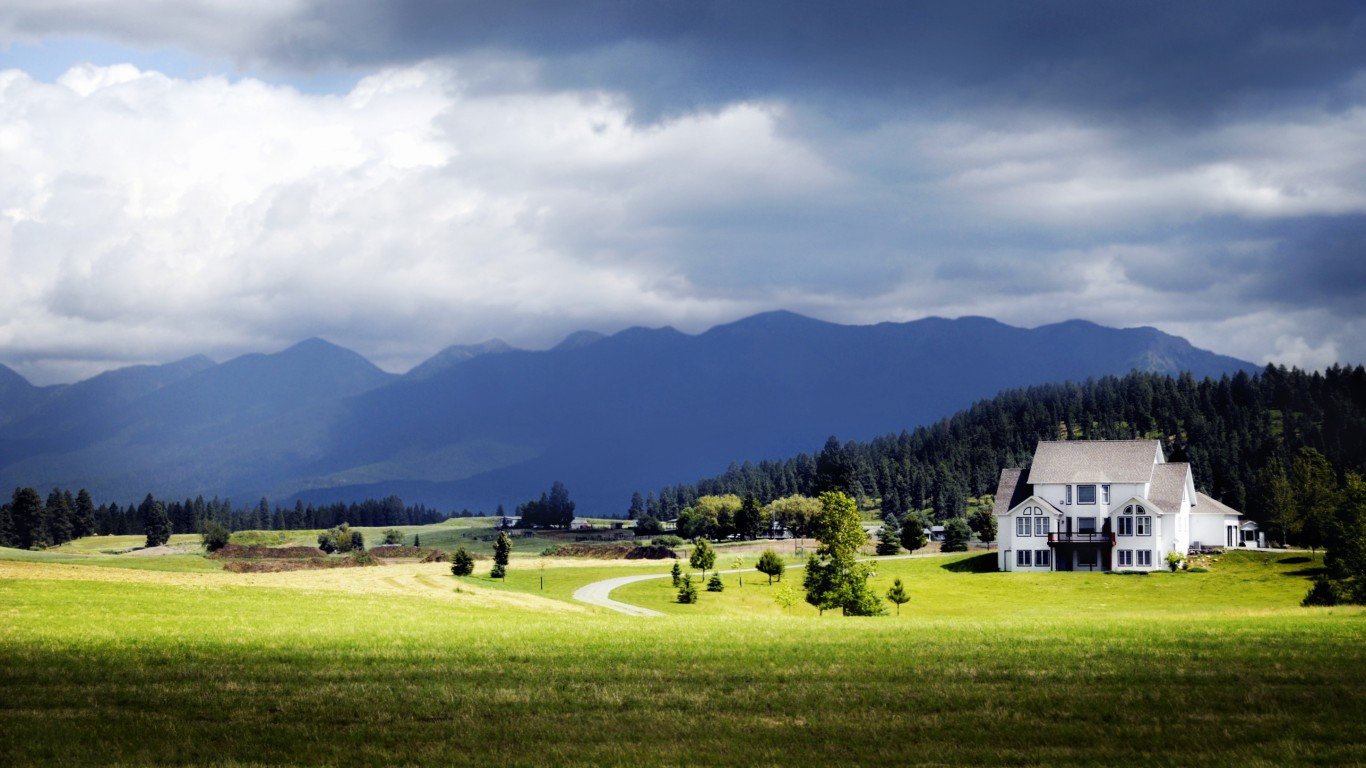
36. Montana
> Land covered by forest & woodland: 25.0%
> Area covered by forest & woodland: 23.5 million acres
> Other major land cover types: Shrub & herb vegetation (28.9%); desert & semi-desert (20.0%); agricultural & developed vegetation (16.7%)
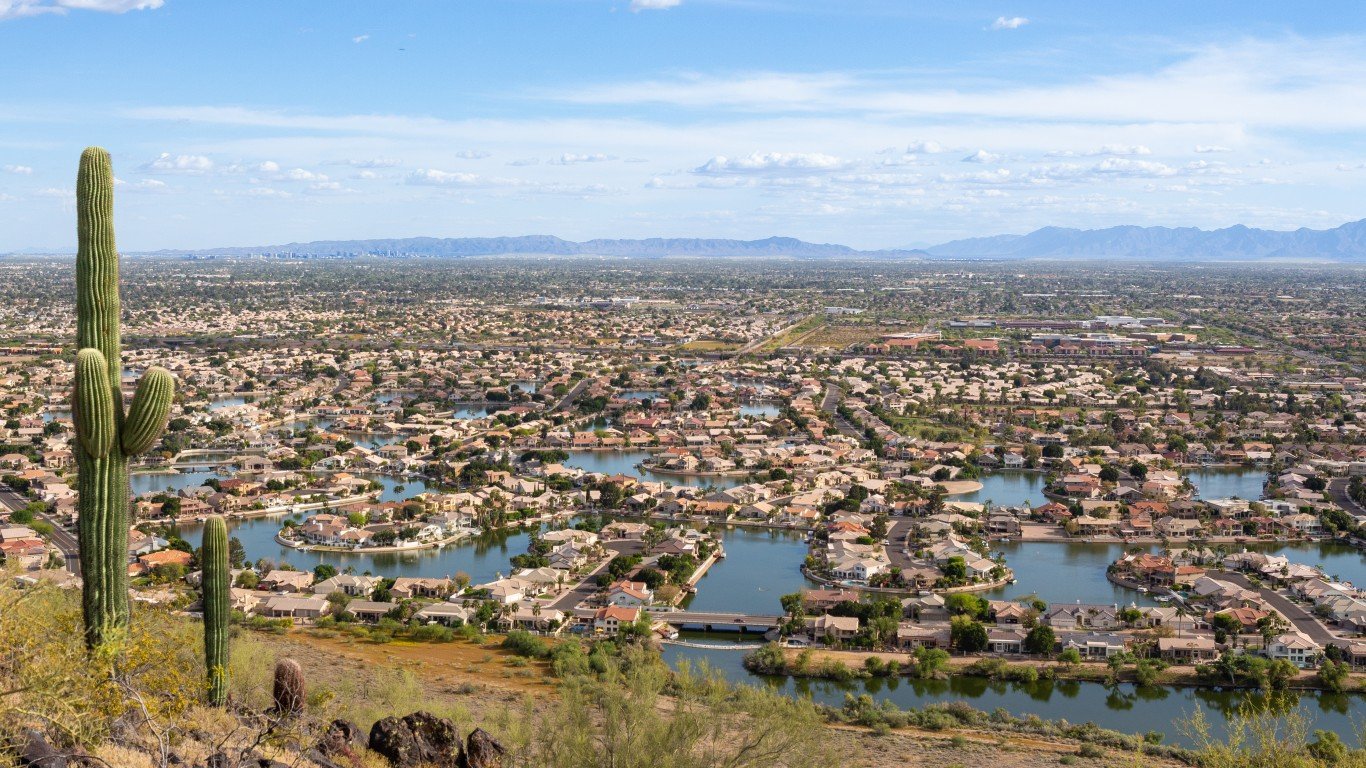
35. Arizona
> Land covered by forest & woodland: 26.6%
> Area covered by forest & woodland: 19.4 million acres
> Other major land cover types: Desert & semi-desert (62.6%); shrub & herb vegetation (4.7%); developed & other human use (3.1%)

34. New Mexico
> Land covered by forest & woodland: 29.2%
> Area covered by forest & woodland: 22.7 million acres
> Other major land cover types: Desert & semi-desert (40.7%); shrub & herb vegetation (25.8%); agricultural & developed vegetation (2.0%)
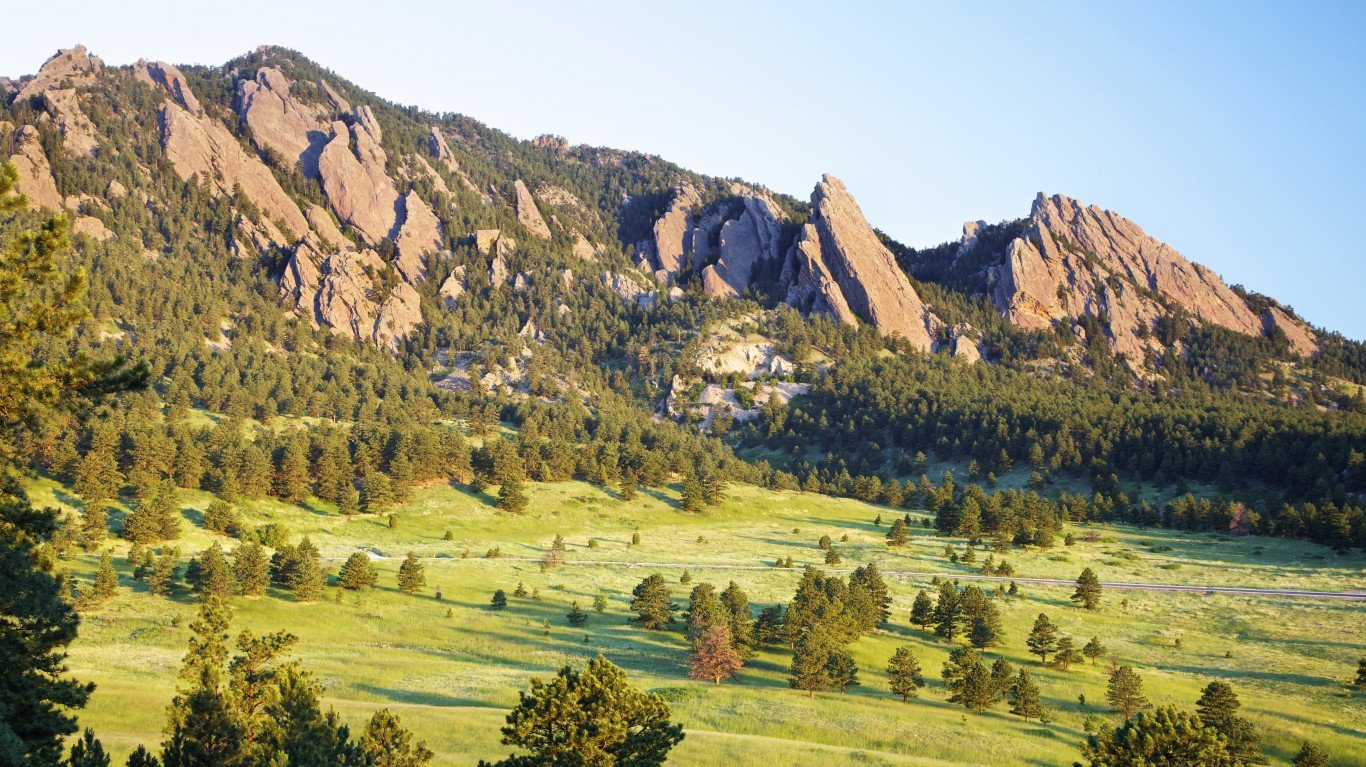
33. Colorado
> Land covered by forest & woodland: 29.4%
> Area covered by forest & woodland: 19.6 million acres
> Other major land cover types: Shrub & herb vegetation (31.4%); agricultural & developed vegetation (18.5%); desert & semi-desert (11.5%)
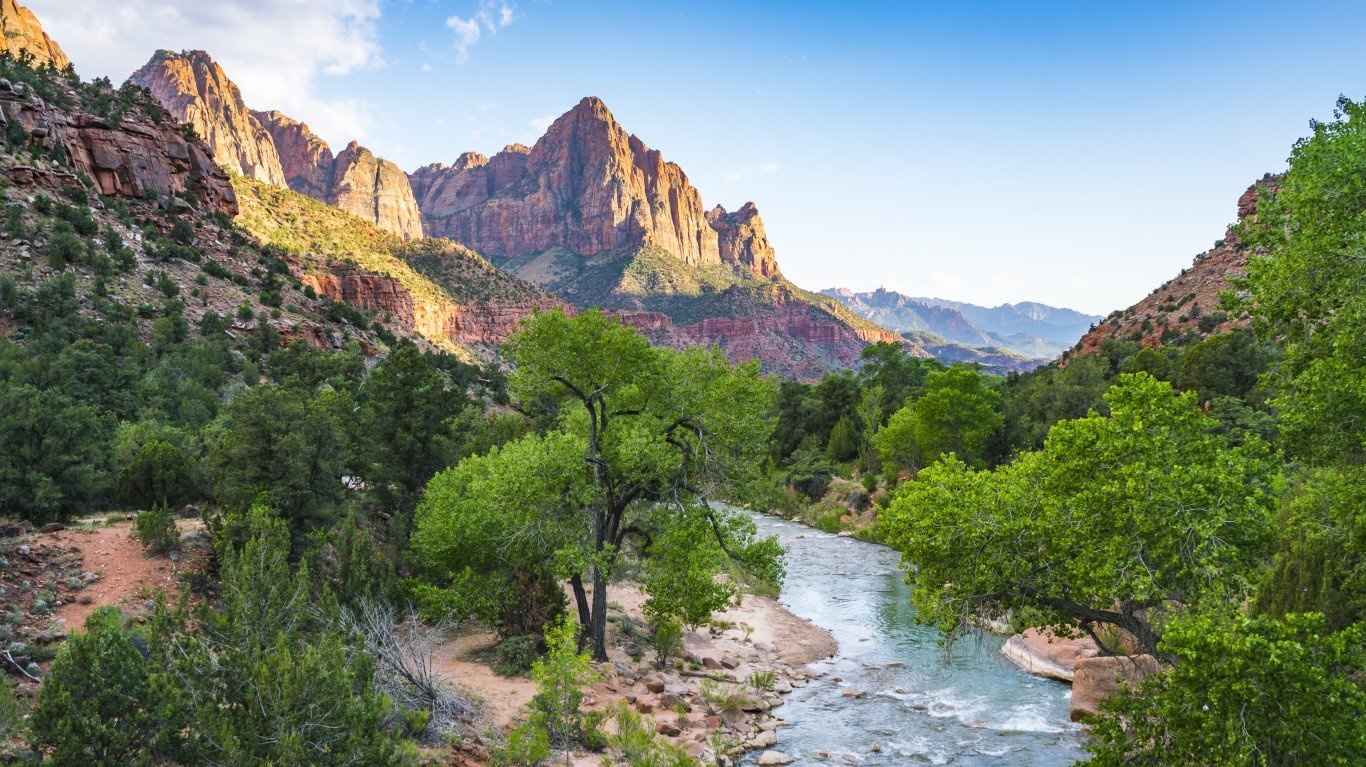
32. Utah
> Land covered by forest & woodland: 29.5%
> Area covered by forest & woodland: 16.1 million acres
> Other major land cover types: Desert & semi-desert (44.1%); shrub & herb vegetation (13.2%); agricultural & developed vegetation (3.7%)
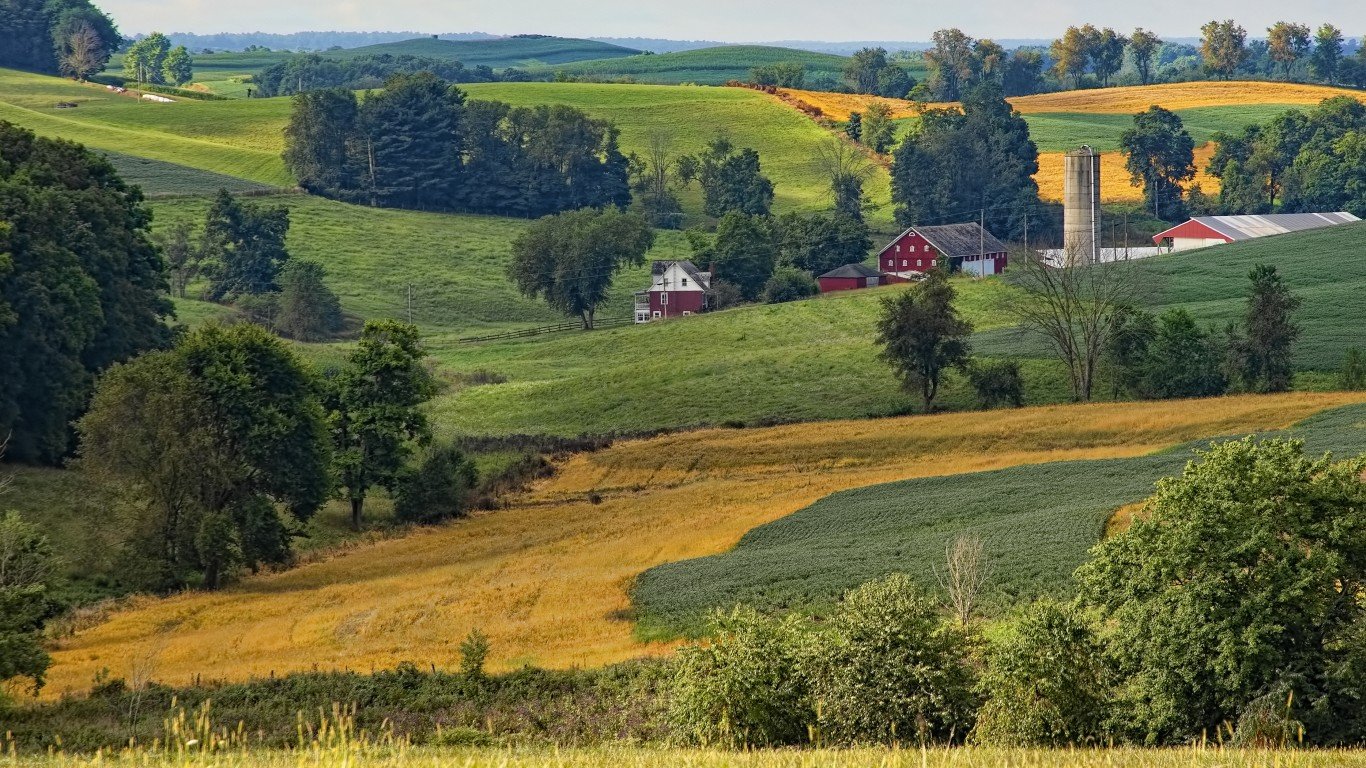
31. Ohio
> Land covered by forest & woodland: 29.6%
> Area covered by forest & woodland: 8.5 million acres
> Other major land cover types: Agricultural & developed vegetation (47.2%); developed & other human use (13.5%); open water (9.0%)
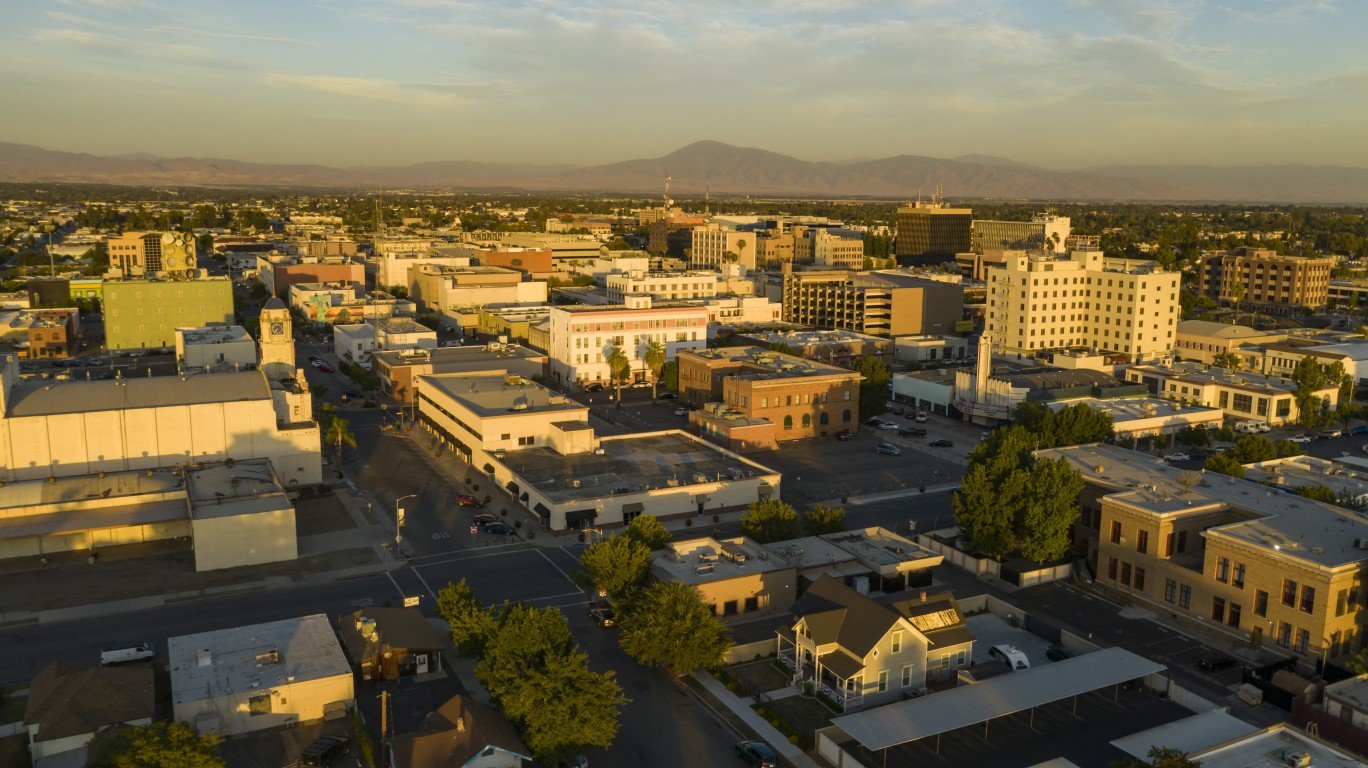
30. California
> Land covered by forest & woodland: 32.6%
> Area covered by forest & woodland: 34.1 million acres
> Other major land cover types: Desert & semi-desert (26.6%); shrub & herb vegetation (16.5%); agricultural & developed vegetation (10.0%)
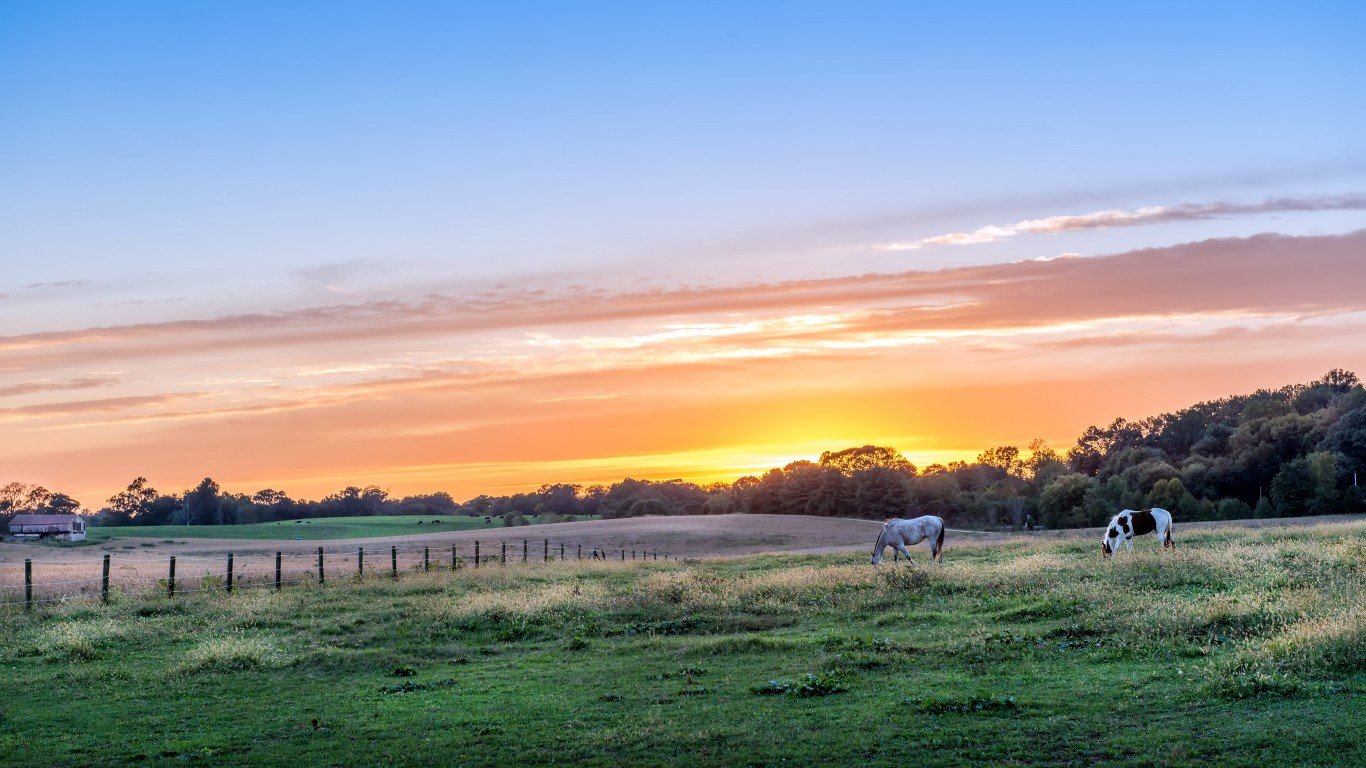
29. Maryland
> Land covered by forest & woodland: 33.3%
> Area covered by forest & woodland: 2.6 million acres
> Other major land cover types: Agricultural & developed vegetation (25.0%); open water (21.5%); developed & other human use (15.2%)
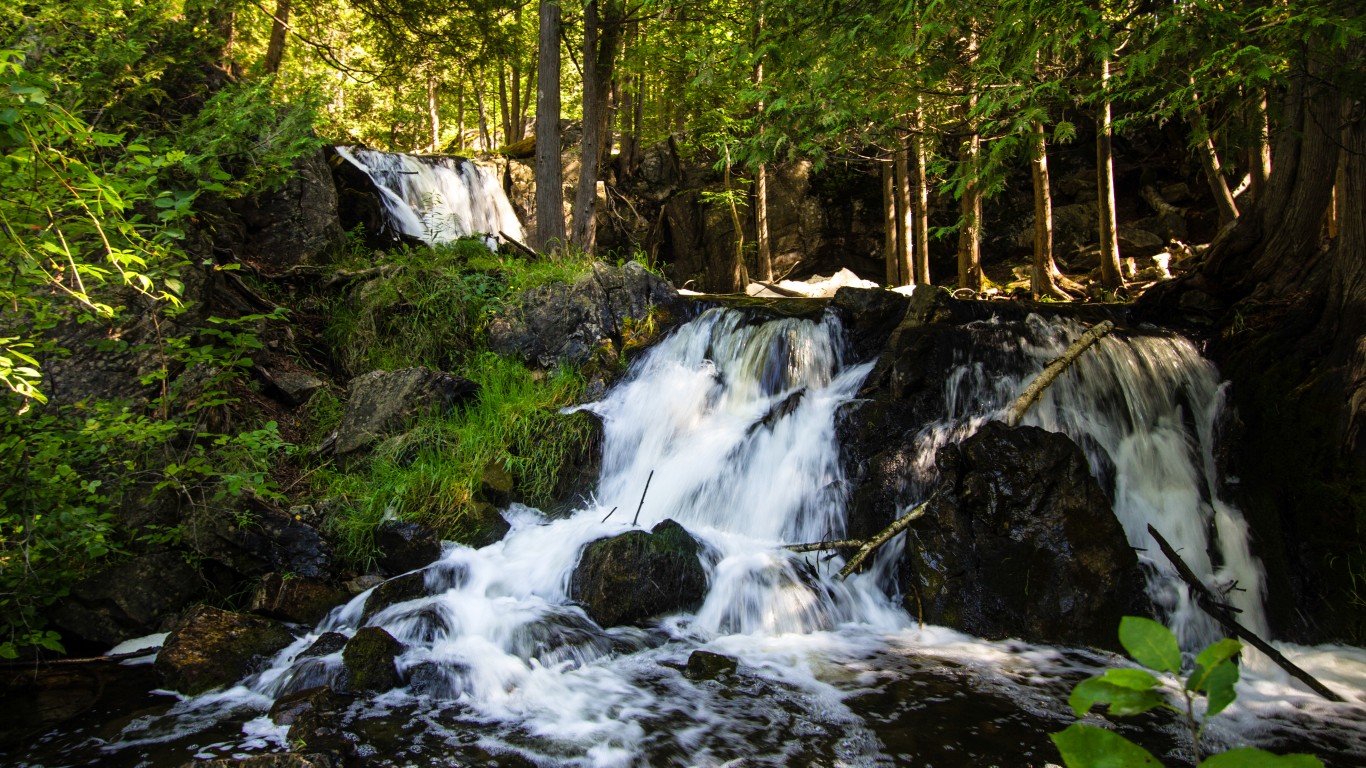
28. Michigan
> Land covered by forest & woodland: 33.9%
> Area covered by forest & woodland: 21.0 million acres
> Other major land cover types: Open water (41.3%); agricultural & developed vegetation (16.6%); developed & other human use (6.5%)
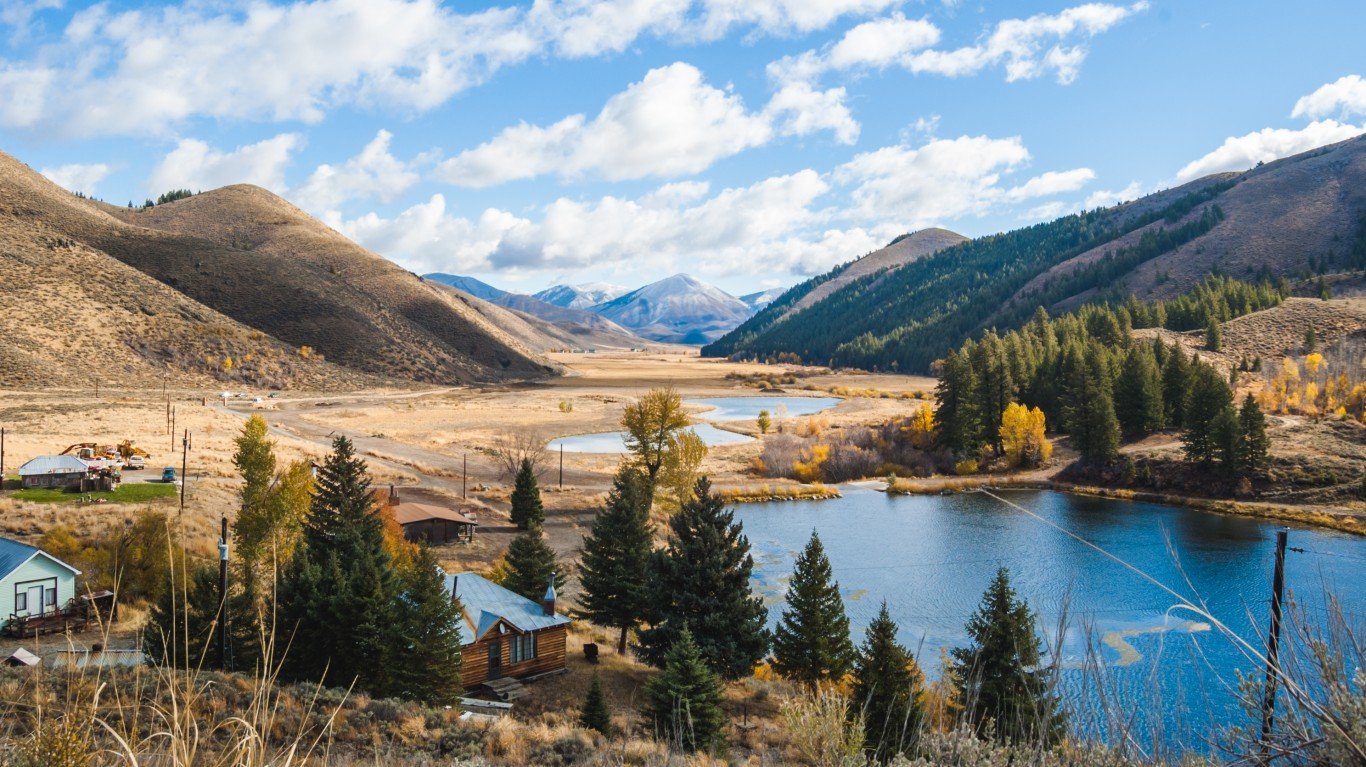
27. Idaho
> Land covered by forest & woodland: 35.8%
> Area covered by forest & woodland: 19.1 million acres
> Other major land cover types: Desert & semi-desert (35.2%); agricultural & developed vegetation (11.1%); shrub & herb vegetation (8.3%)

26. Missouri
> Land covered by forest & woodland: 37.1%
> Area covered by forest & woodland: 16.5 million acres
> Other major land cover types: Agricultural & developed vegetation (52.9%); developed & other human use (6.9%); open water (1.4%)
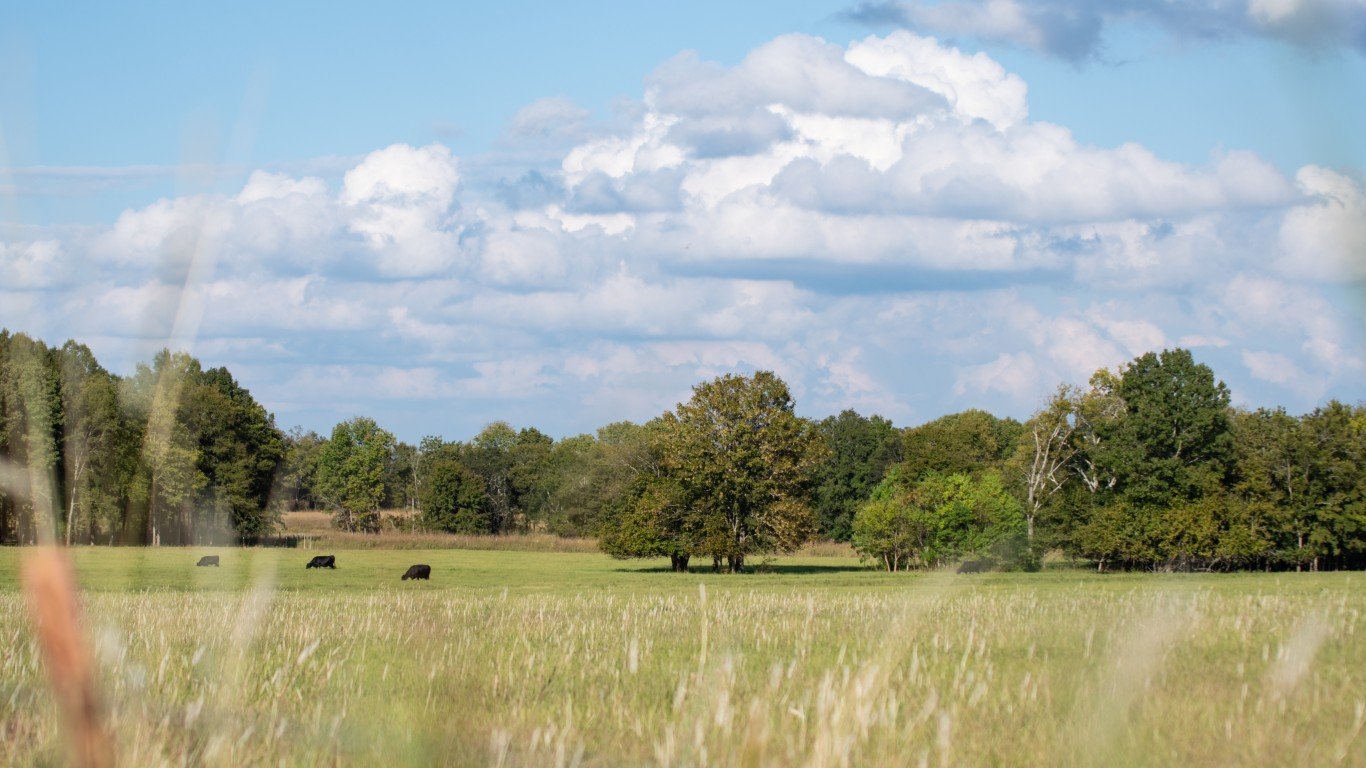
25. Louisiana
> Land covered by forest & woodland: 37.9%
> Area covered by forest & woodland: 12.7 million acres
> Other major land cover types: Agricultural & developed vegetation (20.8%); open water (18.3%); shrub & herb vegetation (8.9%)
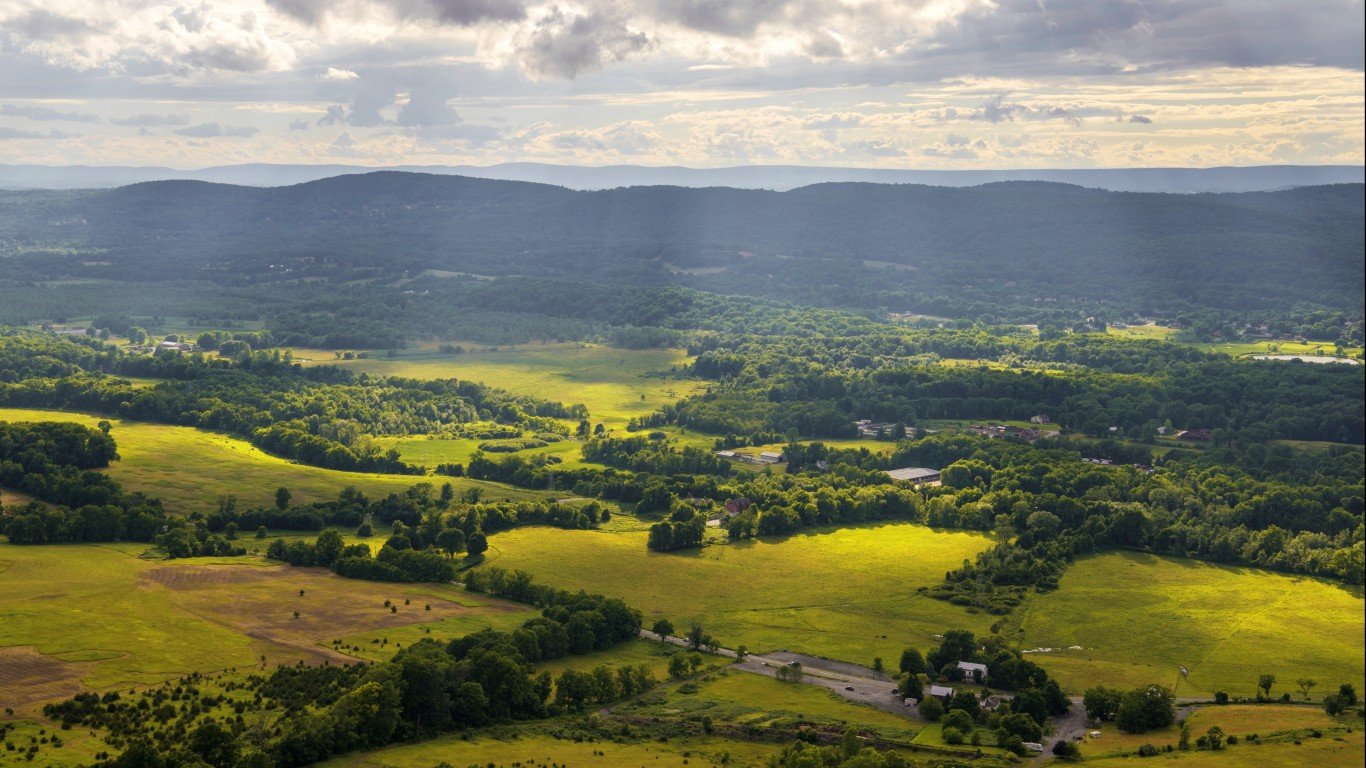
24. New Jersey
> Land covered by forest & woodland: 38.8%
> Area covered by forest & woodland: 2.2 million acres
> Other major land cover types: Developed & other human use (28.1%); open water (14.6%); agricultural & developed vegetation (12.4%)
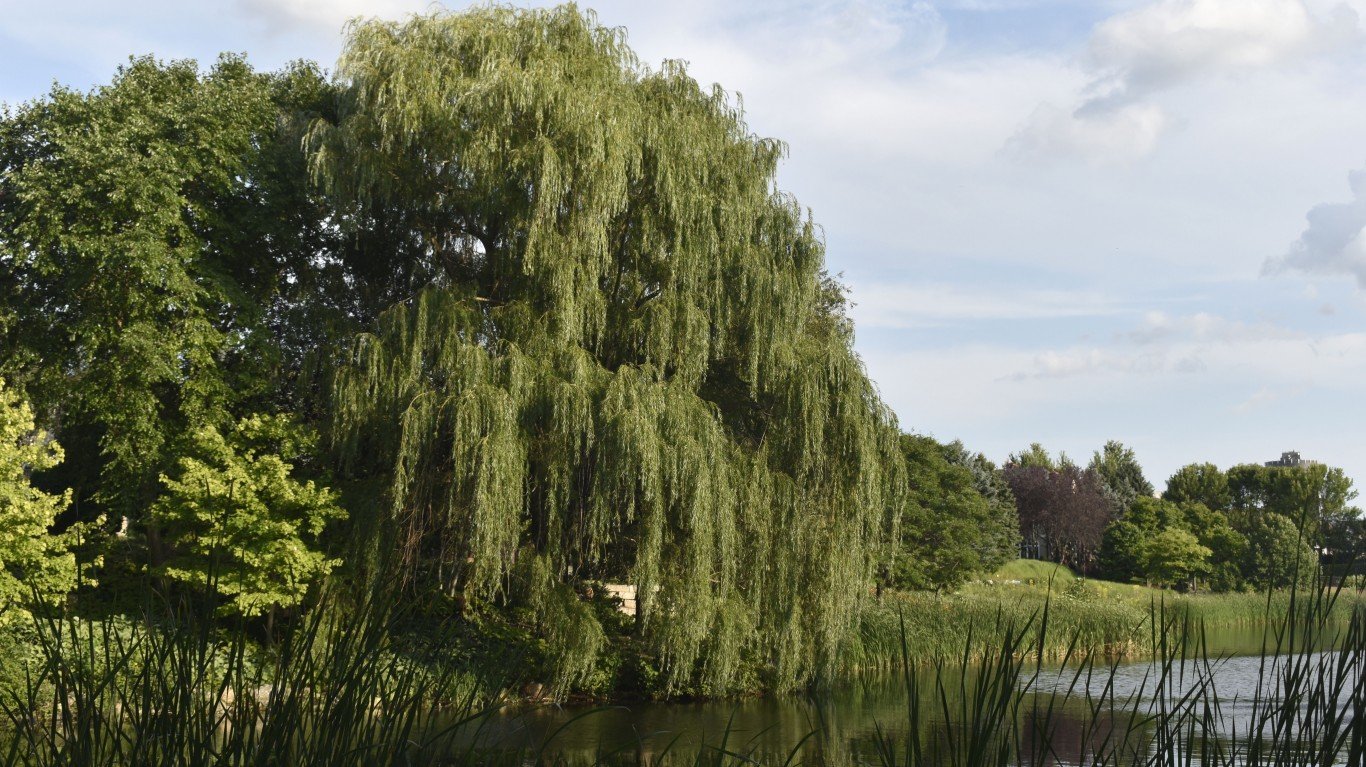
23. Minnesota
> Land covered by forest & woodland: 39.2%
> Area covered by forest & woodland: 21.8 million acres
> Other major land cover types: Agricultural & developed vegetation (43.9%); open water (8.9%); developed & other human use (5.2%)
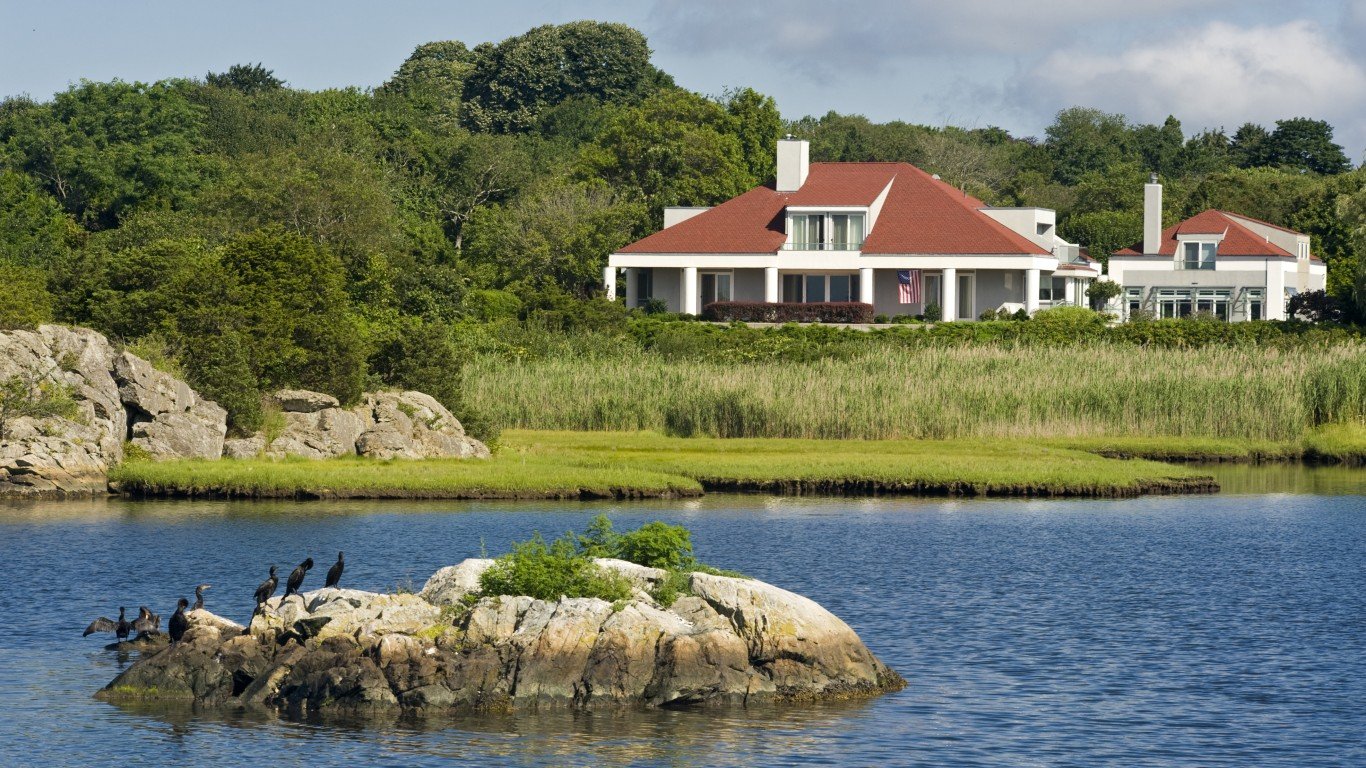
22. Rhode Island
> Land covered by forest & woodland: 39.5%
> Area covered by forest & woodland: 390,394 acres
> Other major land cover types: Open water (31.9%); developed & other human use (21.4%); agricultural & developed vegetation (3.8%)

21. Washington
> Land covered by forest & woodland: 39.7%
> Area covered by forest & woodland: 18.1 million acres
> Other major land cover types: Agricultural & developed vegetation (16.6%); desert & semi-desert (16.4%); recently disturbed or modified (8.6%)
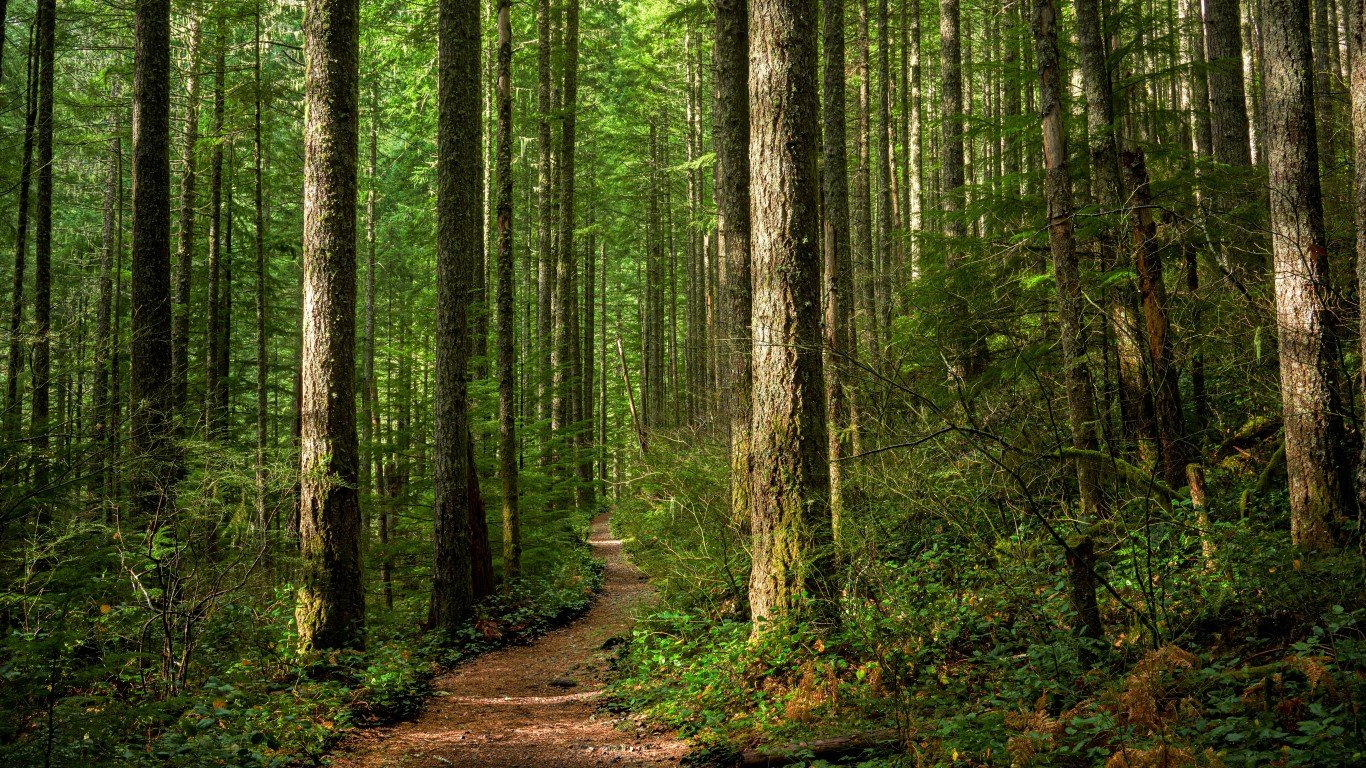
20. Oregon
> Land covered by forest & woodland: 41.3%
> Area covered by forest & woodland: 26.0 million acres
> Other major land cover types: Desert & semi-desert (31.8%); agricultural & developed vegetation (8.0%); recently disturbed or modified (6.7%)
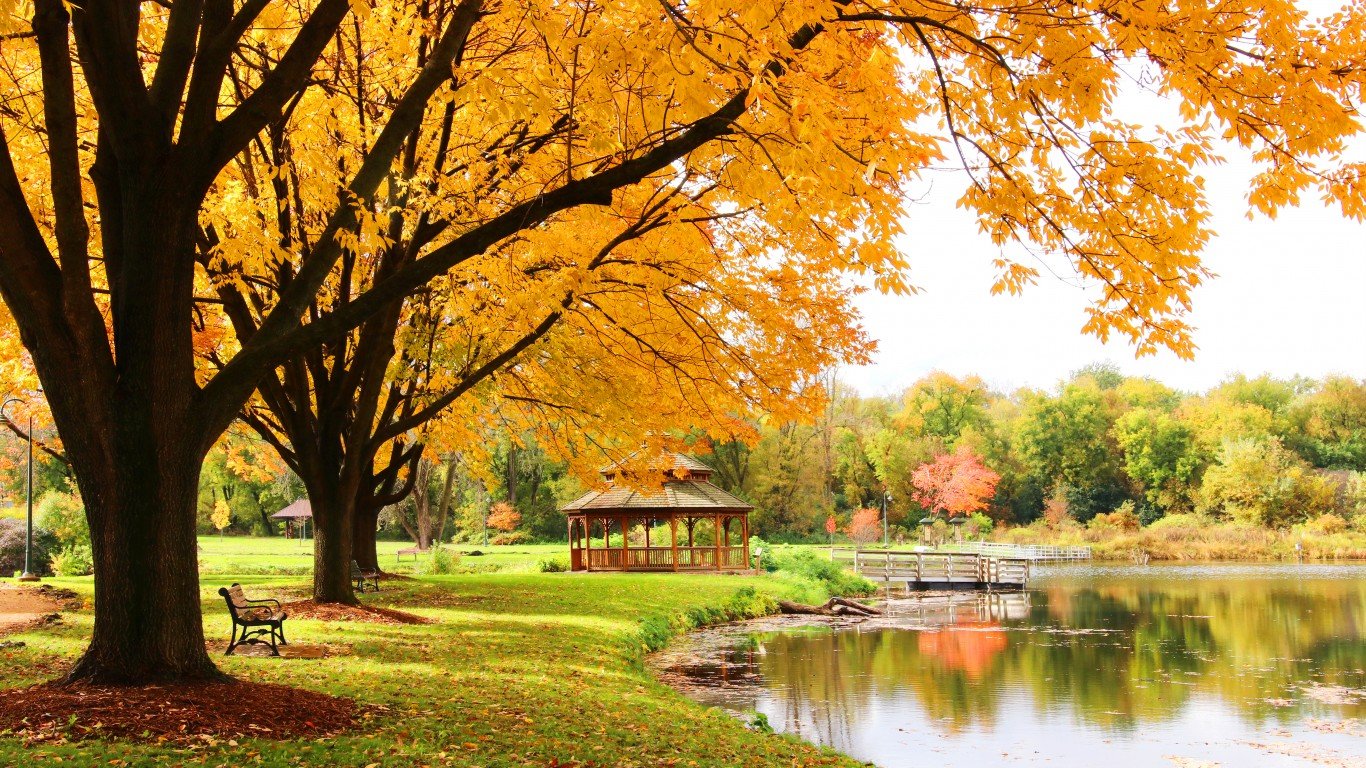
19. Wisconsin
> Land covered by forest & woodland: 41.9%
> Area covered by forest & woodland: 17.6 million acres
> Other major land cover types: Agricultural & developed vegetation (33.4%); open water (17.3%); developed & other human use (6.1%)
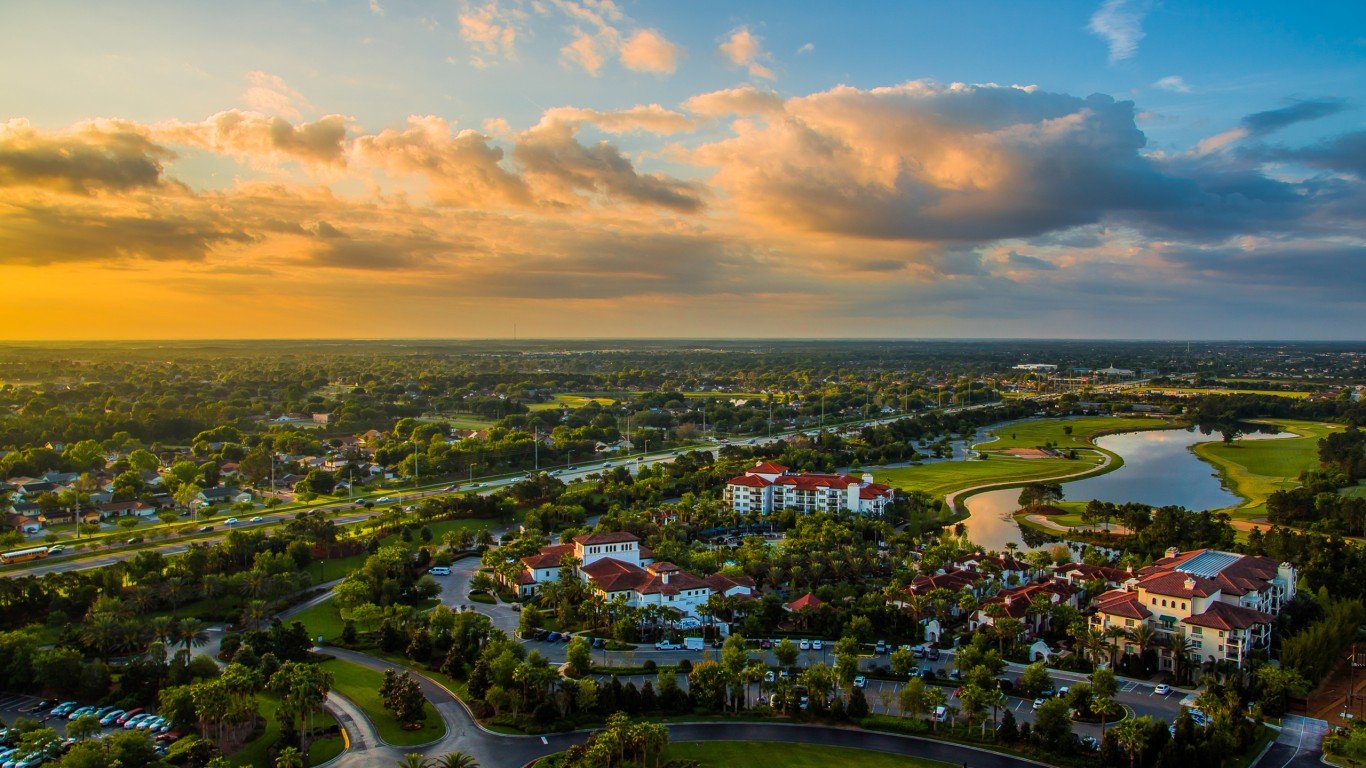
18. Florida
> Land covered by forest & woodland: 42.8%
> Area covered by forest & woodland: 18.0 million acres
> Other major land cover types: Open water (16.0%); agricultural & developed vegetation (14.5%); developed & other human use (13.4%)

17. North Carolina
> Land covered by forest & woodland: 47.9%
> Area covered by forest & woodland: 16.5 million acres
> Other major land cover types: Agricultural & developed vegetation (20.9%); developed & other human use (10.2%); open water (9.4%)
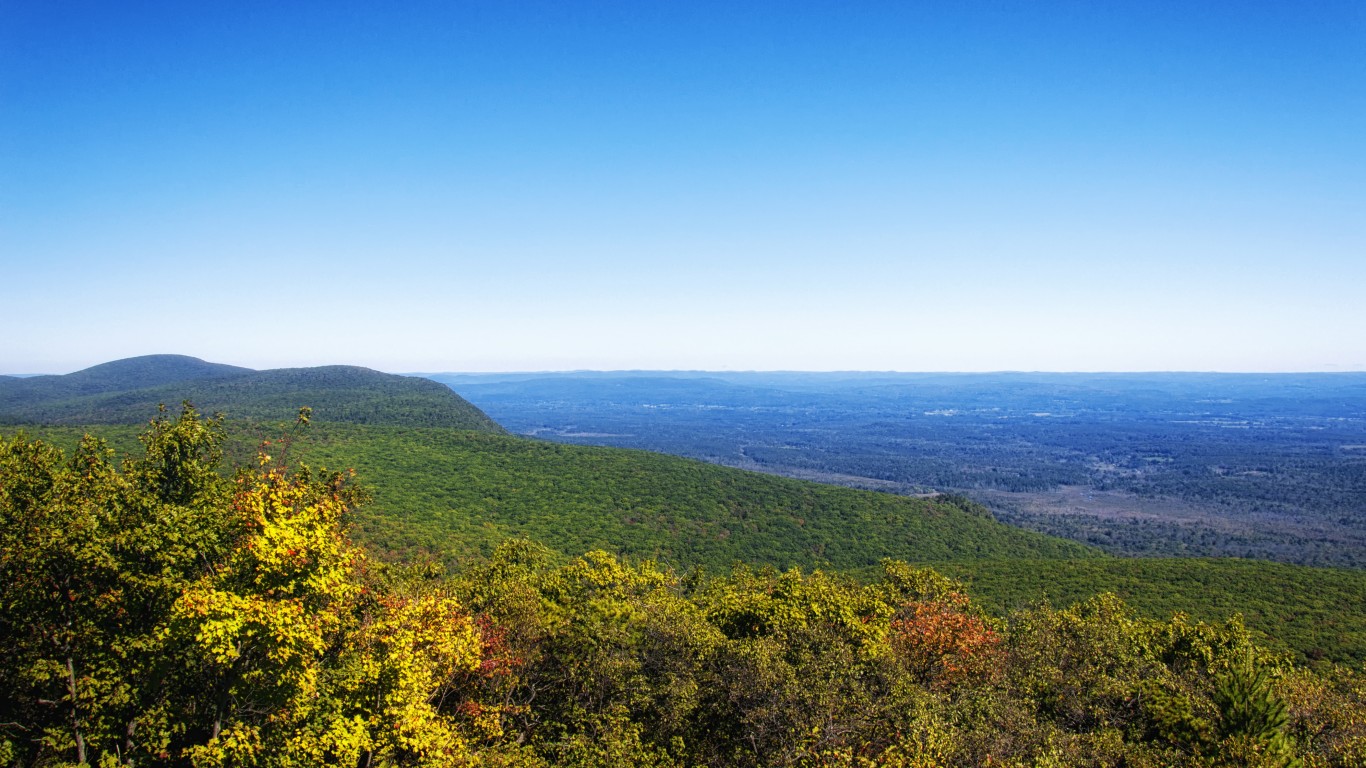
16. Massachusetts
> Land covered by forest & woodland: 49.6%
> Area covered by forest & woodland: 3.3 million acres
> Other major land cover types: Open water (21.1%); developed & other human use (20.9%); agricultural & developed vegetation (5.0%)

15. Tennessee
> Land covered by forest & woodland: 51.7%
> Area covered by forest & woodland: 13.9 million acres
> Other major land cover types: Agricultural & developed vegetation (29.6%); developed & other human use (9.7%); recently disturbed or modified (5.4%)
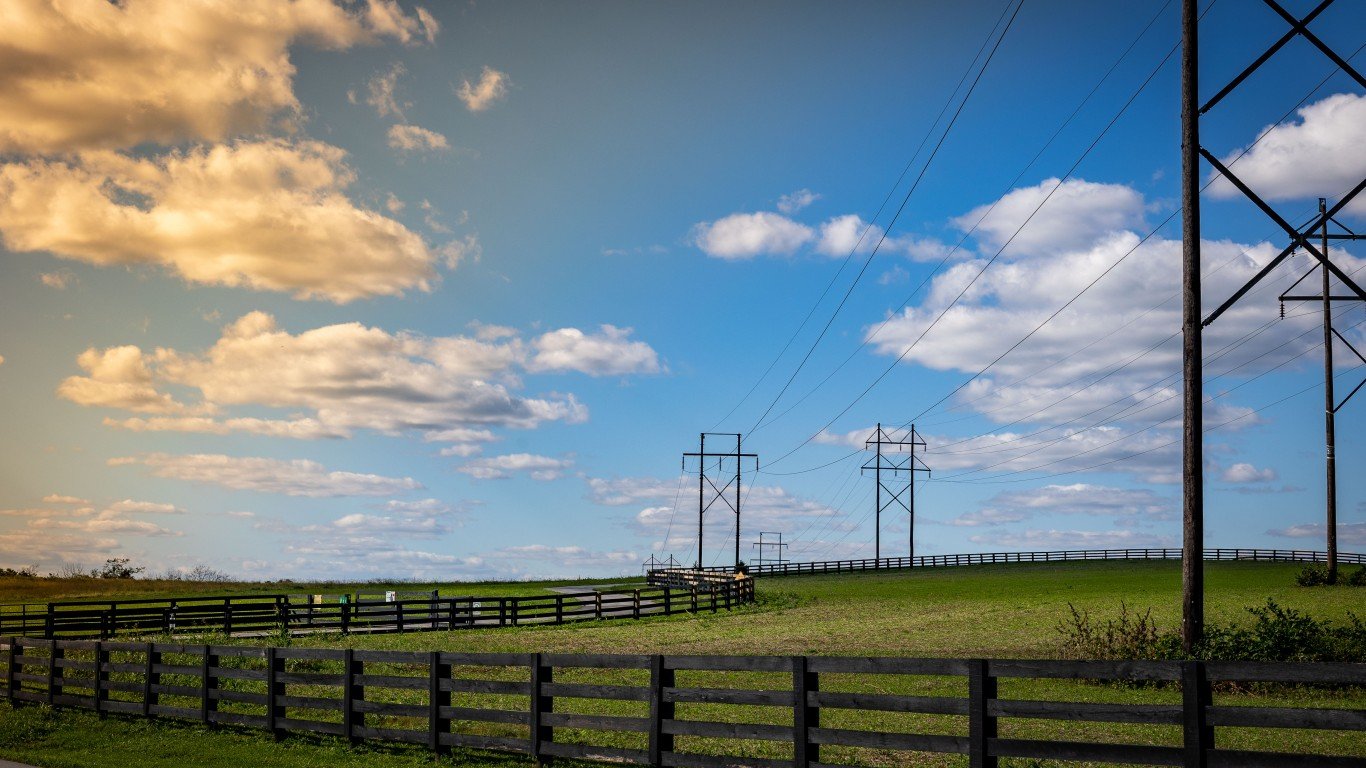
14. Kentucky
> Land covered by forest & woodland: 52.2%
> Area covered by forest & woodland: 13.5 million acres
> Other major land cover types: Agricultural & developed vegetation (32.9%); developed & other human use (7.6%); recently disturbed or modified (4.5%)
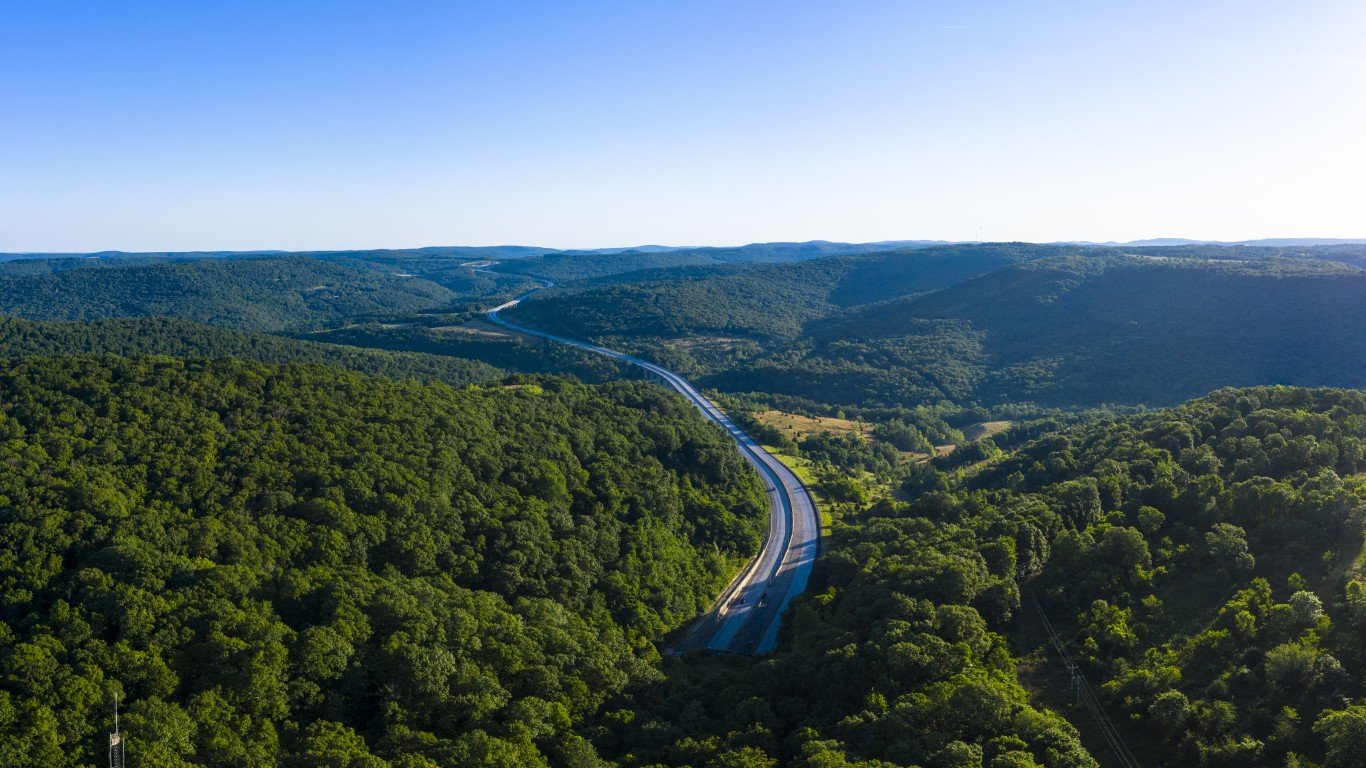
13. Arkansas
> Land covered by forest & woodland: 53.8%
> Area covered by forest & woodland: 18.3 million acres
> Other major land cover types: Agricultural & developed vegetation (34.5%); developed & other human use (5.9%); recently disturbed or modified (2.9%)
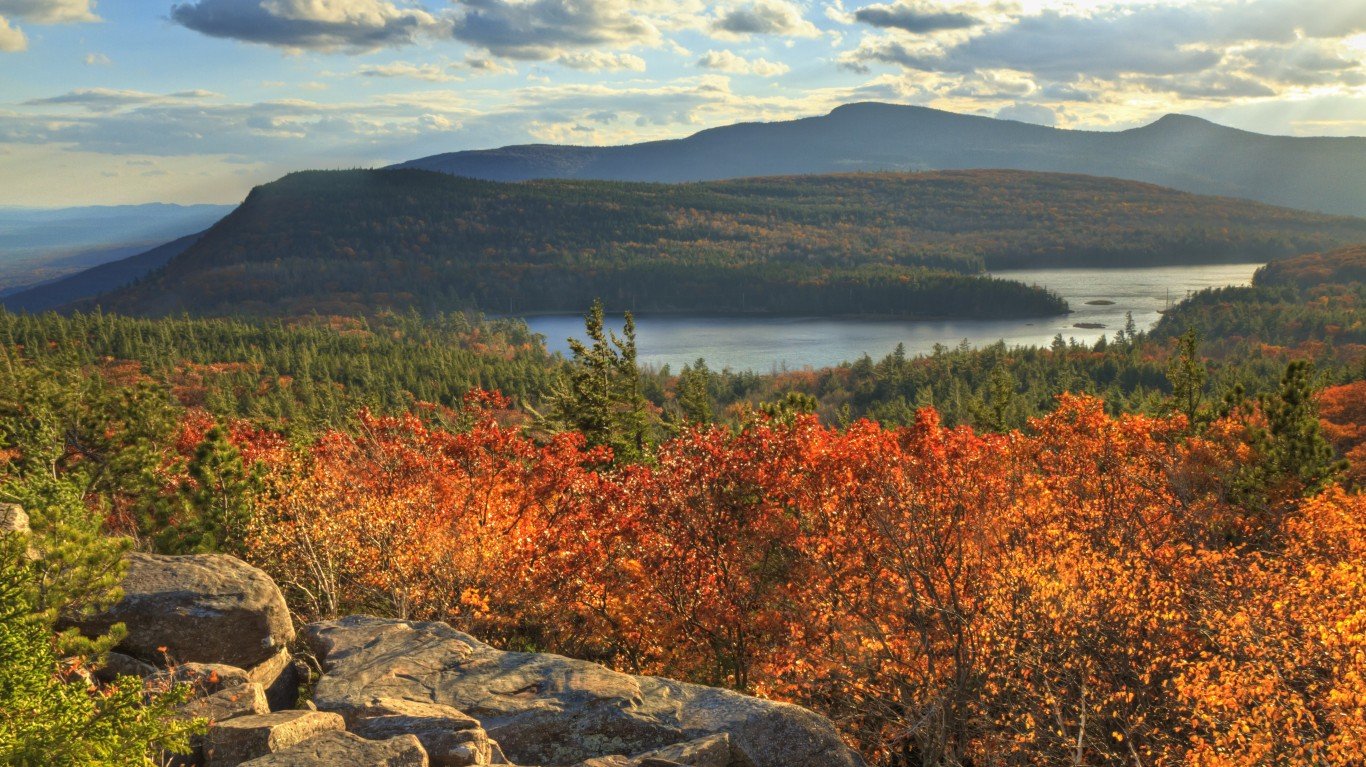
12. New York
> Land covered by forest & woodland: 54.2%
> Area covered by forest & woodland: 18.9 million acres
> Other major land cover types: Agricultural & developed vegetation (21.0%); open water (13.6%); developed & other human use (8.5%)
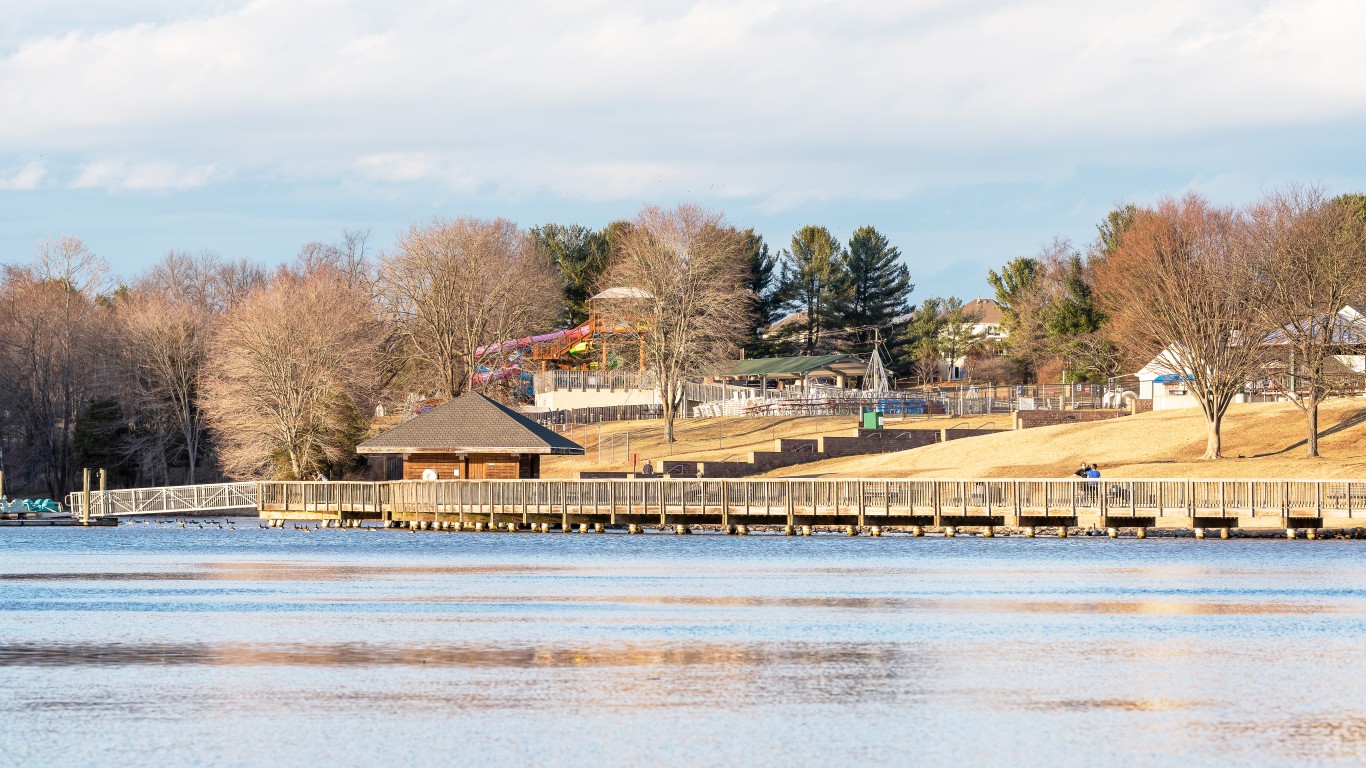
11. Virginia
> Land covered by forest & woodland: 55.9%
> Area covered by forest & woodland: 15.3 million acres
> Other major land cover types: Agricultural & developed vegetation (20.0%); developed & other human use (9.4%); open water (7.4%)
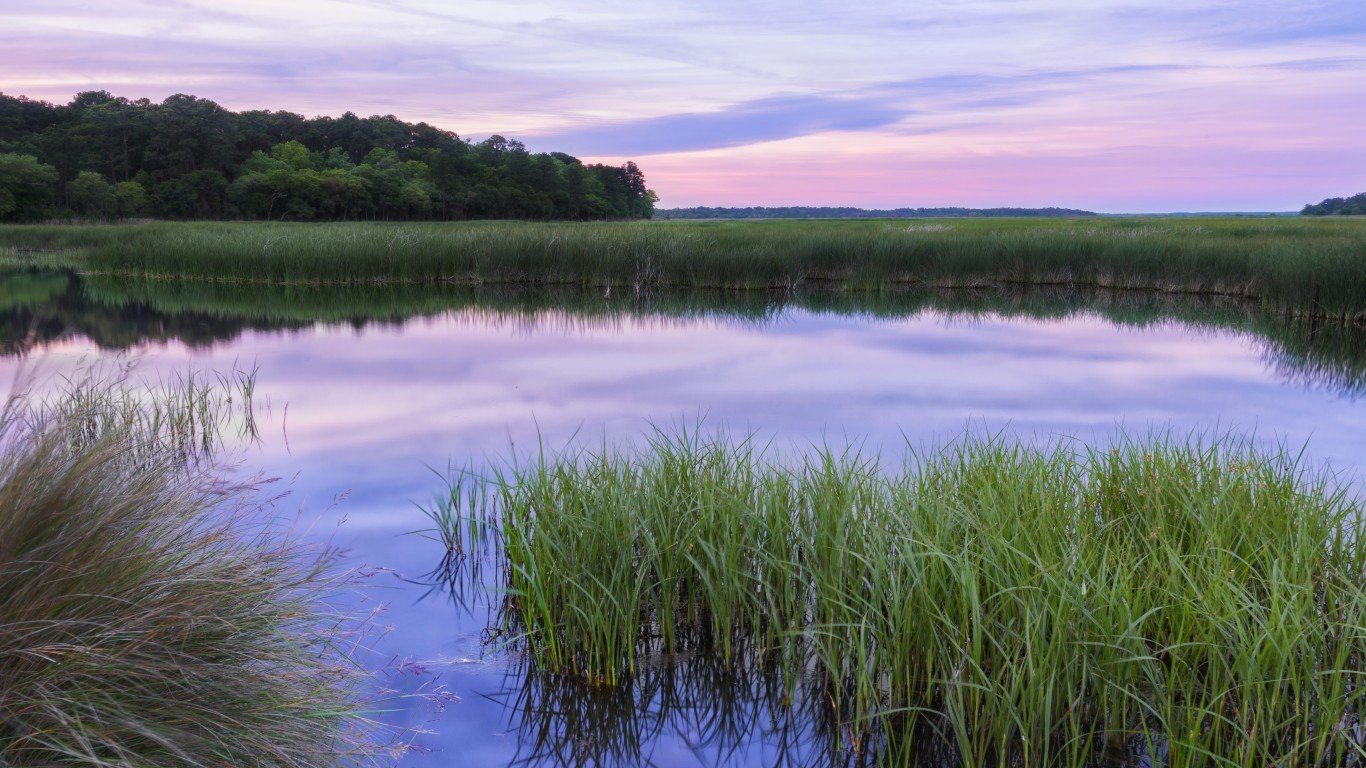
10. South Carolina
> Land covered by forest & woodland: 56.0%
> Area covered by forest & woodland: 11.5 million acres
> Other major land cover types: Agricultural & developed vegetation (16.4%); developed & other human use (9.4%); recently disturbed or modified (8.9%)
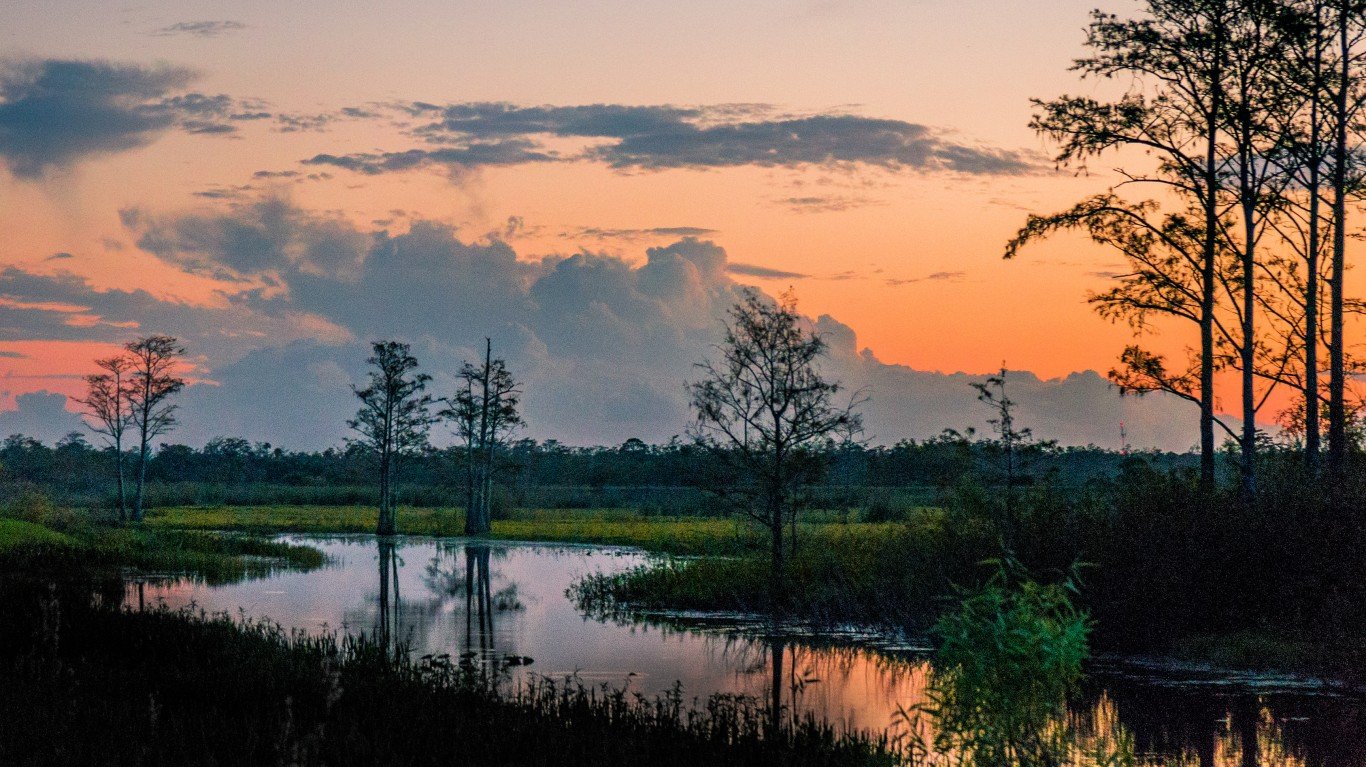
9. Mississippi
> Land covered by forest & woodland: 56.0%
> Area covered by forest & woodland: 17.4 million acres
> Other major land cover types: Agricultural & developed vegetation (26.2%); recently disturbed or modified (6.8%); developed & other human use (6.4%)
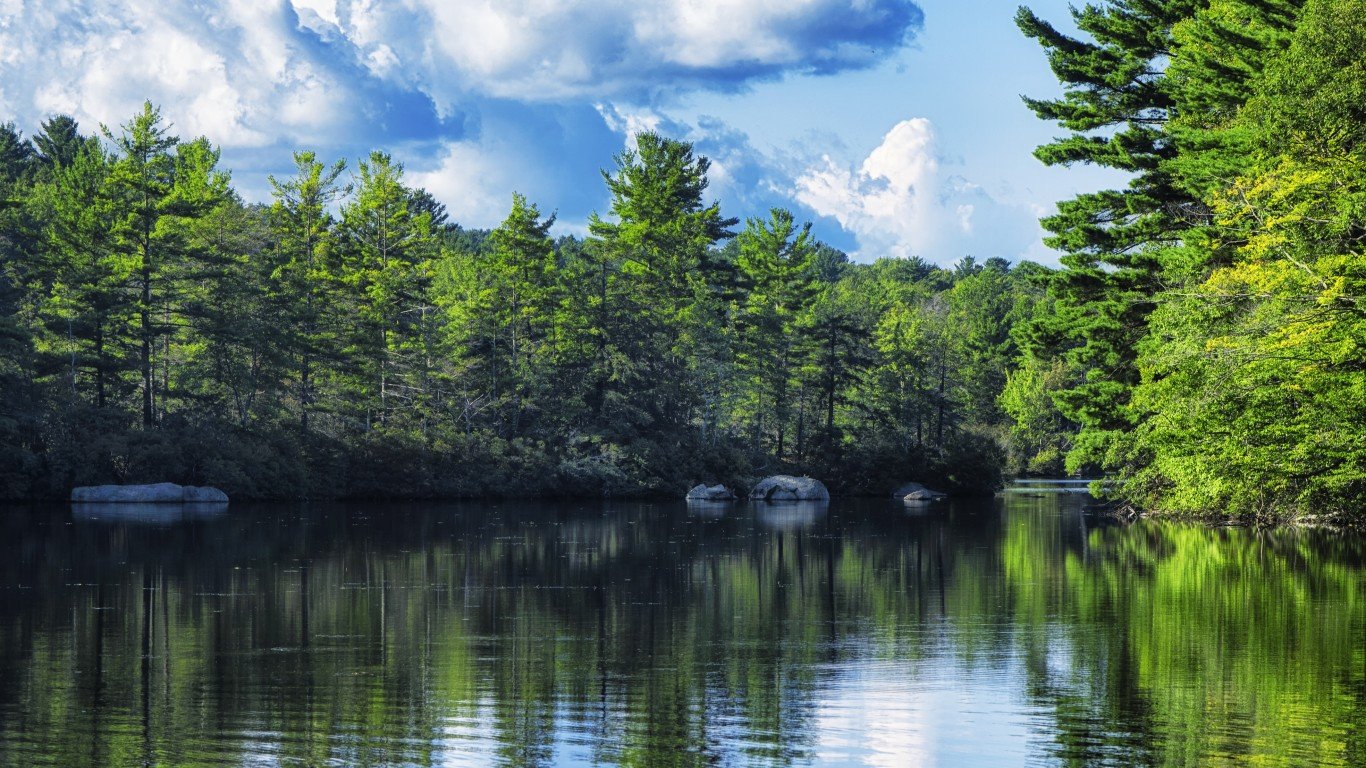
8. Connecticut
> Land covered by forest & woodland: 56.2%
> Area covered by forest & woodland: 2.0 million acres
> Other major land cover types: Developed & other human use (22.3%); open water (12.8%); agricultural & developed vegetation (6.6%)
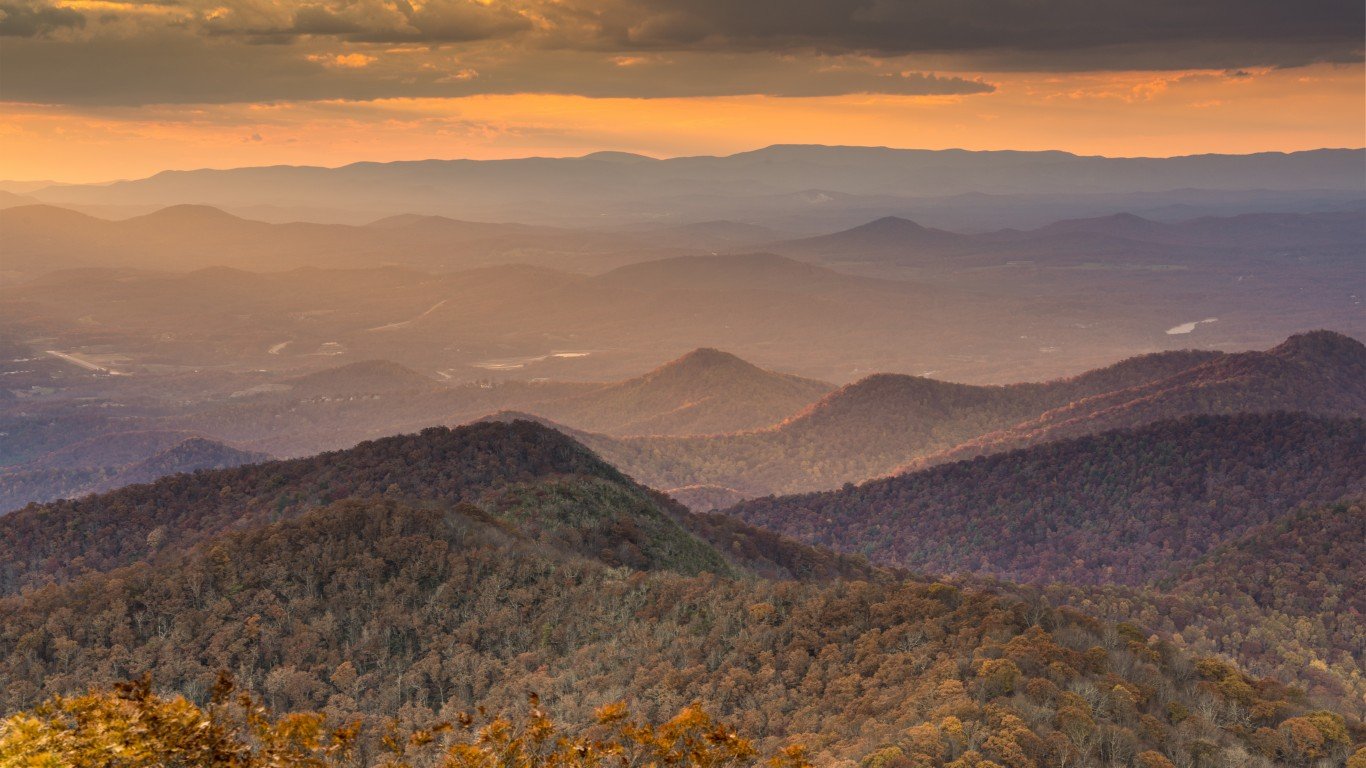
7. Georgia
> Land covered by forest & woodland: 58.2%
> Area covered by forest & woodland: 22.1 million acres
> Other major land cover types: Agricultural & developed vegetation (18.1%); developed & other human use (10.1%); recently disturbed or modified (9.5%)
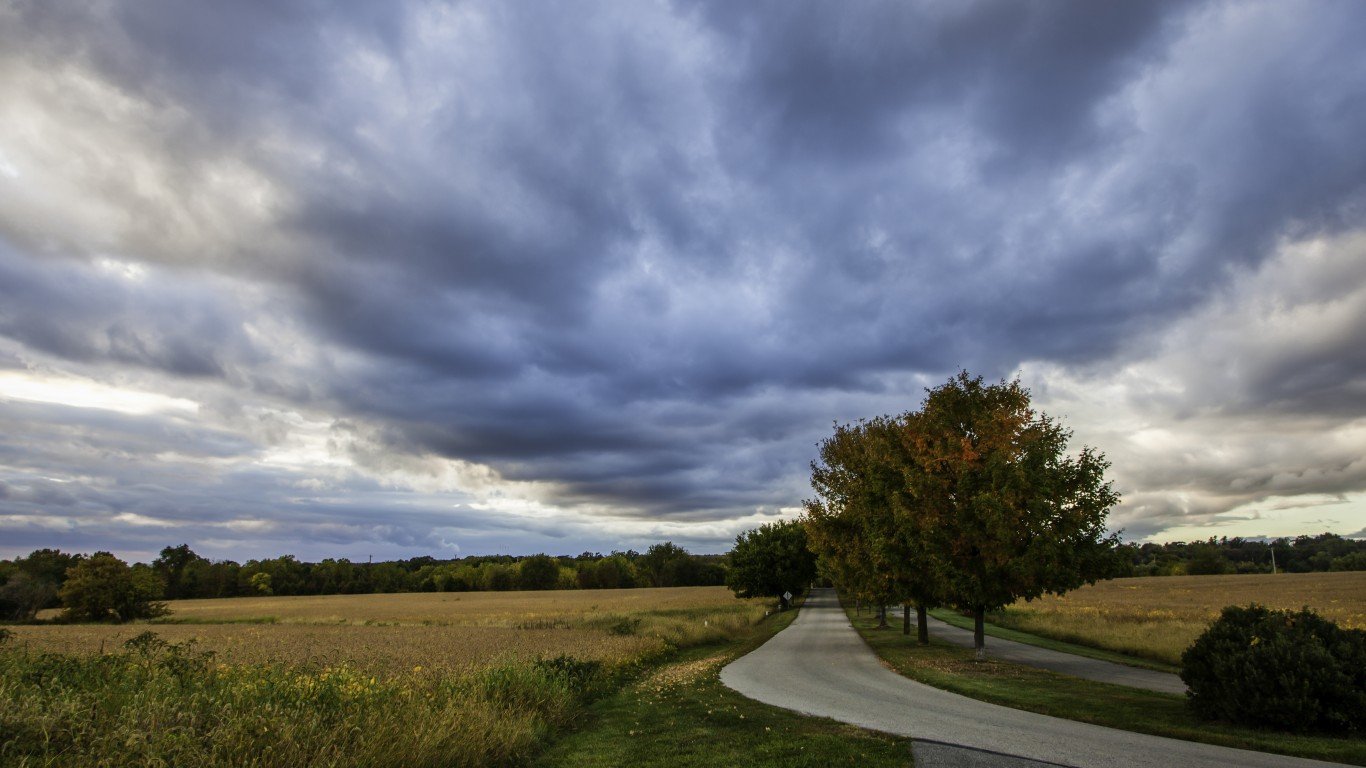
6. Pennsylvania
> Land covered by forest & woodland: 59.6%
> Area covered by forest & woodland: 17.6 million acres
> Other major land cover types: Agricultural & developed vegetation (22.7%); developed & other human use (12.3%); open water (2.9%)
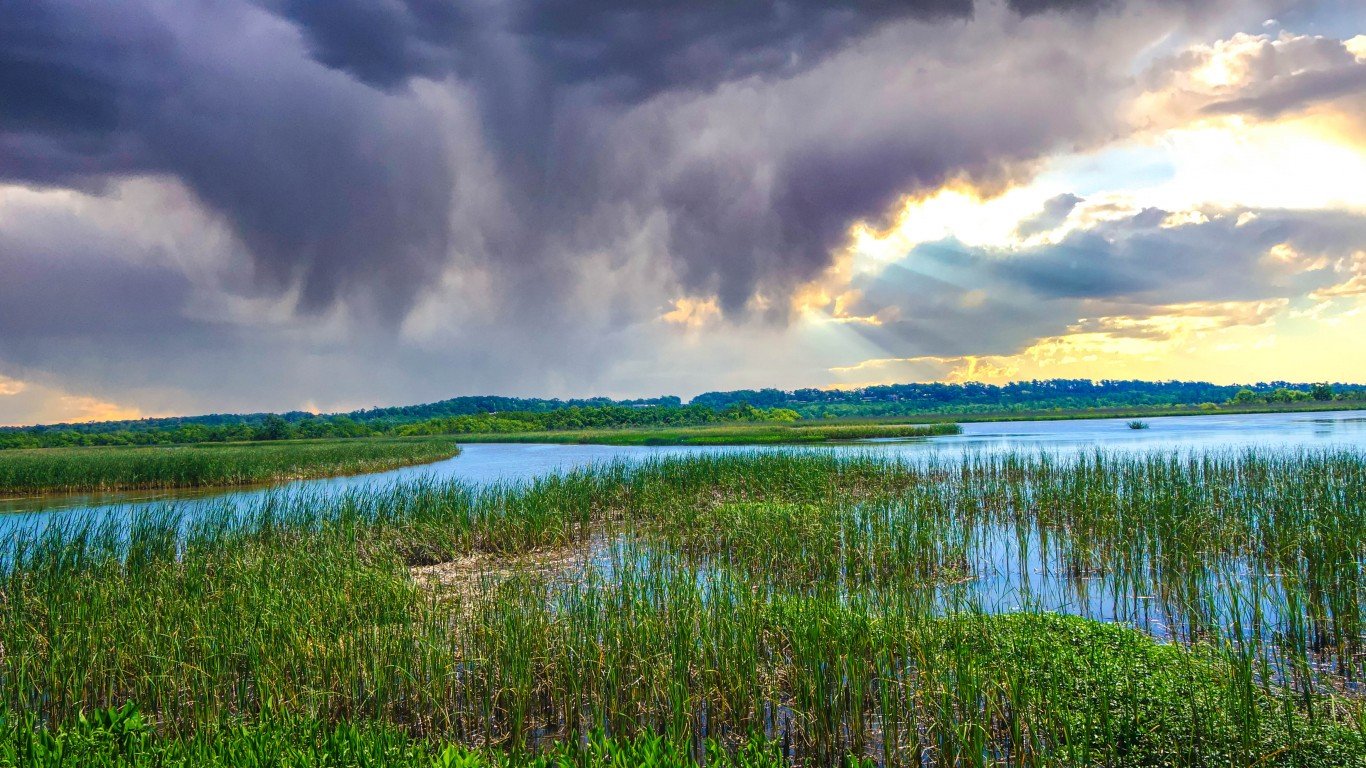
5. Alabama
> Land covered by forest & woodland: 61.4%
> Area covered by forest & woodland: 20.6 million acres
> Other major land cover types: Agricultural & developed vegetation (17.9%); recently disturbed or modified (9.5%); developed & other human use (7.3%)
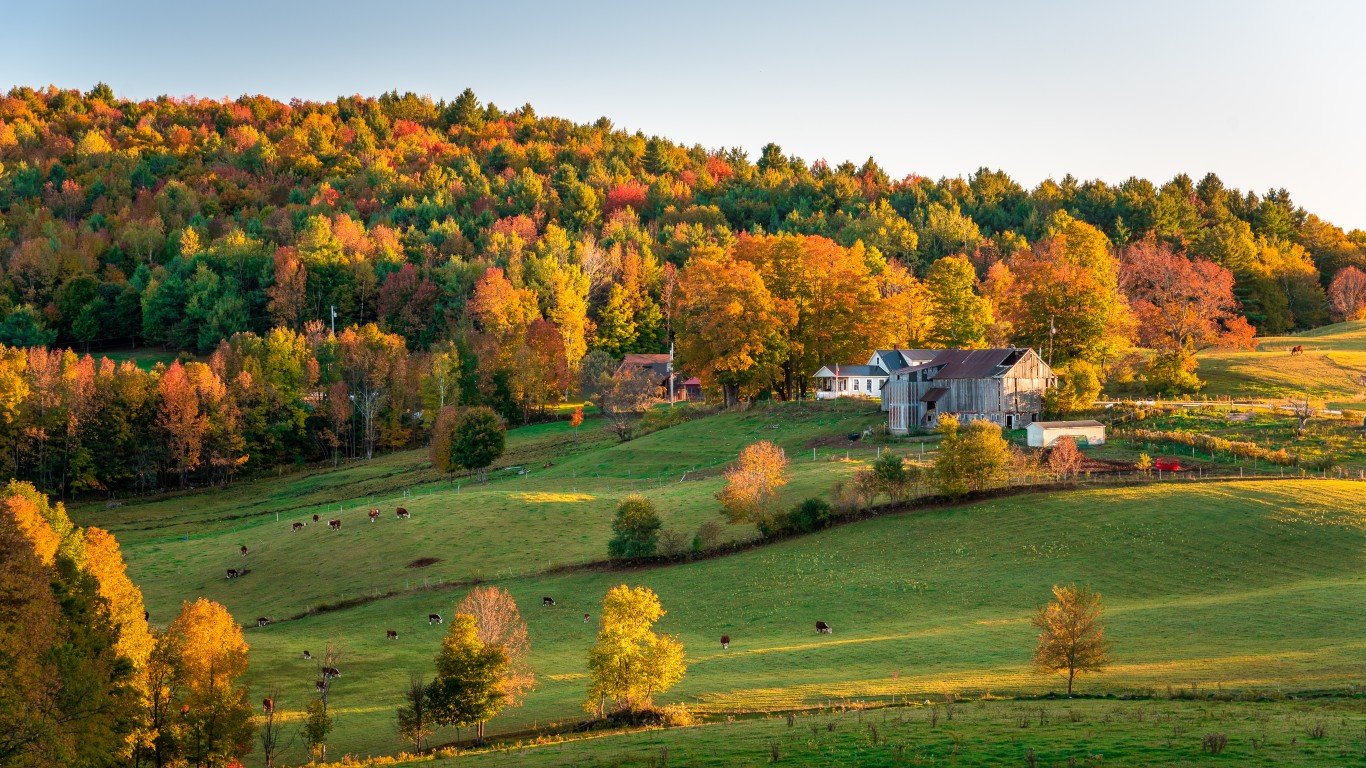
4. Vermont
> Land covered by forest & woodland: 73.9%
> Area covered by forest & woodland: 4.5 million acres
> Other major land cover types: Agricultural & developed vegetation (15.1%); developed & other human use (5.6%); open water (4.0%)

3. Maine
> Land covered by forest & woodland: 76.6%
> Area covered by forest & woodland: 17.3 million acres
> Other major land cover types: Open water (12.1%); agricultural & developed vegetation (4.0%); developed & other human use (3.4%)

2. West Virginia
> Land covered by forest & woodland: 80.1%
> Area covered by forest & woodland: 12.4 million acres
> Other major land cover types: Agricultural & developed vegetation (9.0%); developed & other human use (7.3%); recently disturbed or modified (1.5%)
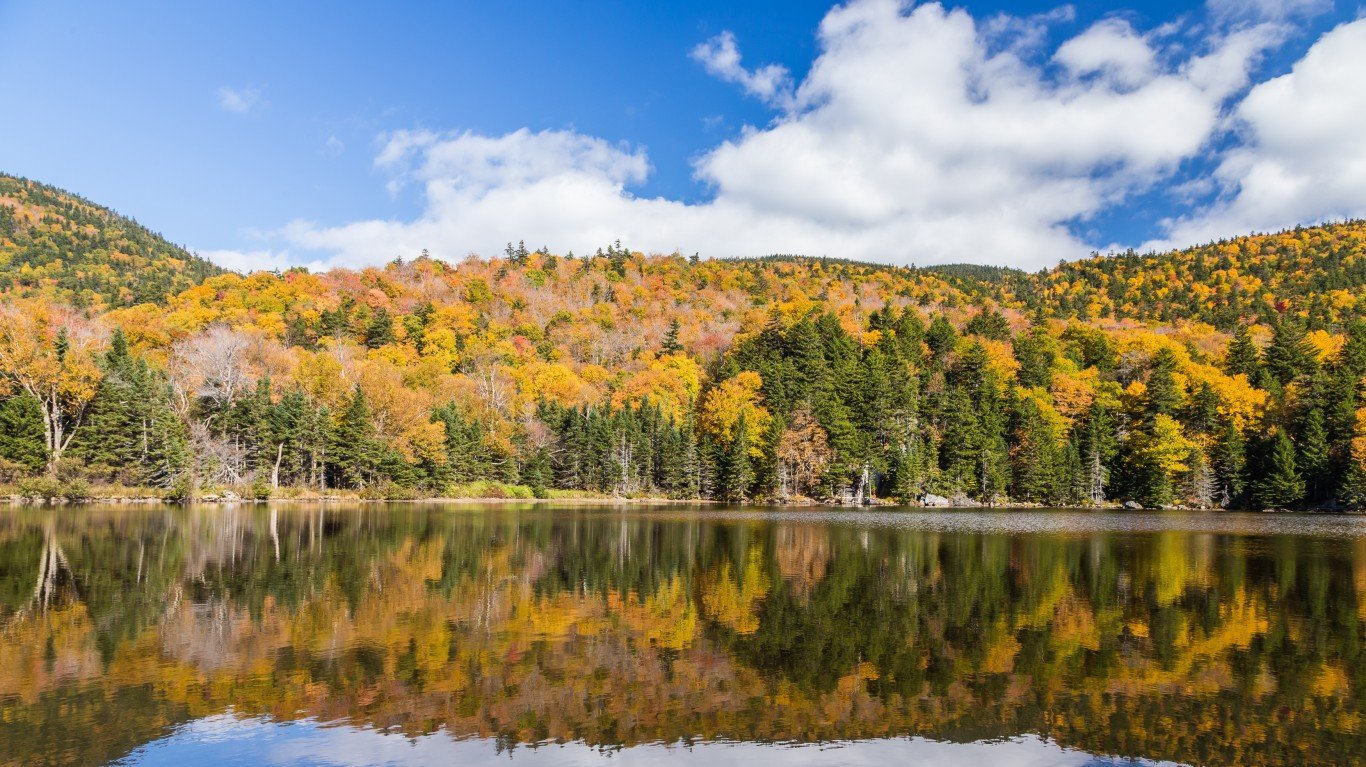
1. New Hampshire
> Land covered by forest & woodland: 80.3%
> Area covered by forest & woodland: 4.8 million acres
> Other major land cover types: Developed & other human use (8.1%); agricultural & developed vegetation (4.2%); open water (4.0%)
